




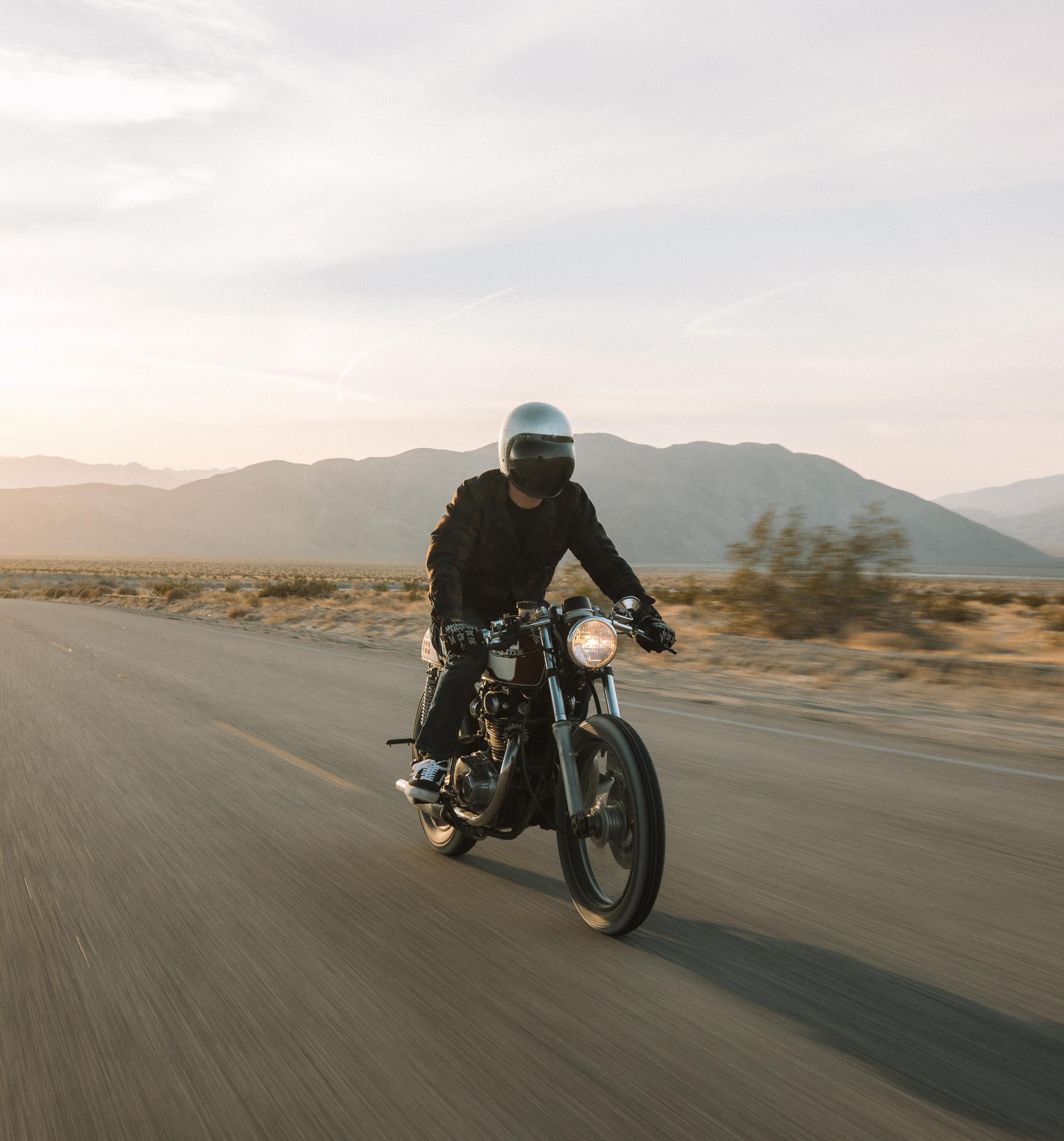
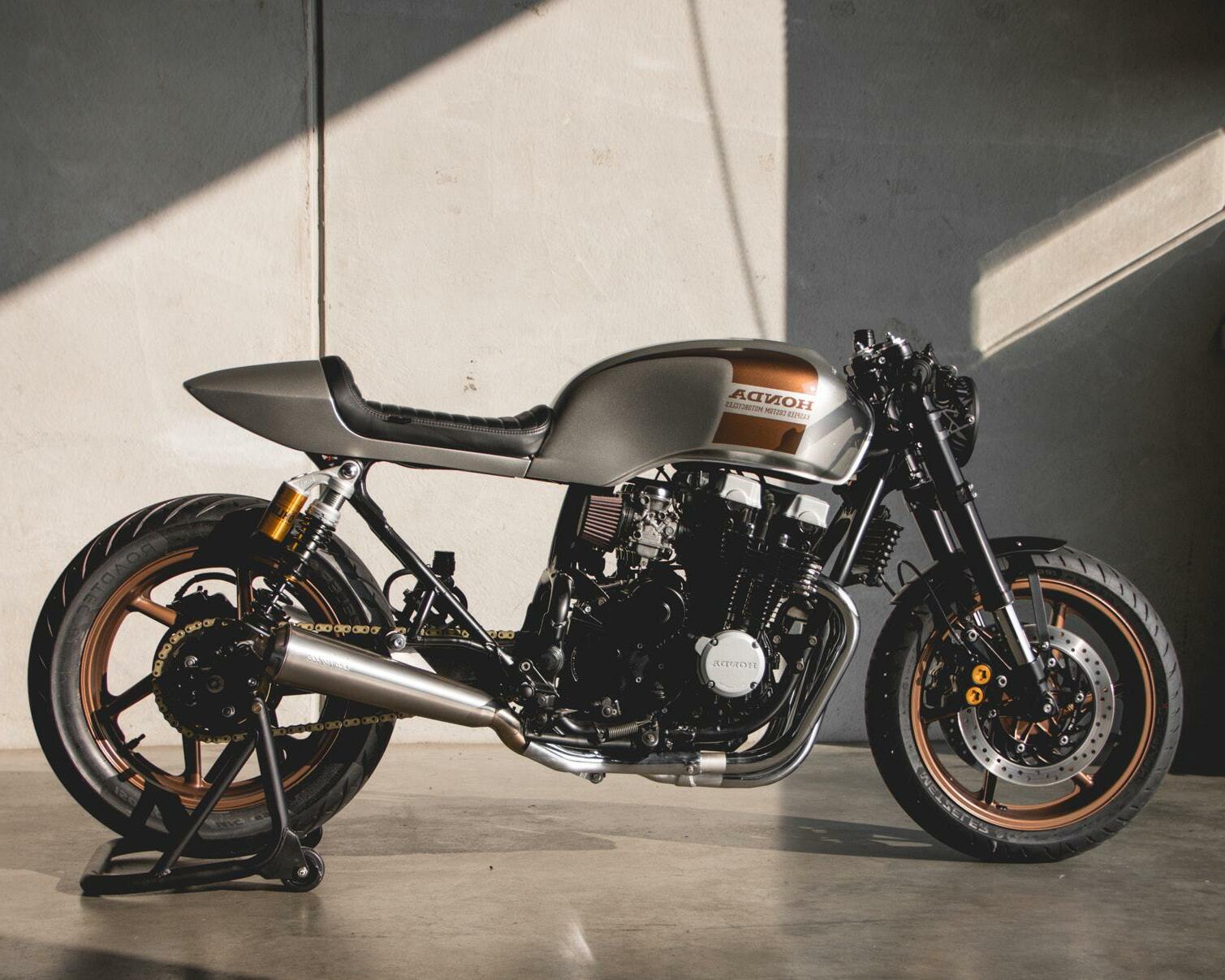

Most English factories since the opening of the Brooklands race course and Isle of Man TT (1907) offered road-going versions of their racing motorcycles, usually called „TT Replicas,“ Brooklands Specials, or „Clubman“ models, which were more expensive but faster and lighter than their „touring“ machines. Of course, these racerish models were exactly what young men wanted, and thus were always good sellers! In the 1950s, the BSA Gold Star Clubman dominated the Isle of Man Clubman‘s TT race, and became a very popular road machine for riders bent on speed. Triumph, Velocette, and Norton all offered „Clubman“ or „Super Sport“ models, and private owners who couldn‘t afford the latest model tended to modify whatever machine they owned to get the „look“ of a Clubmanracer-dropped handlebars or clip-ons, a racing „humped“seat, rear-set footrests, open bellmouths on the carbs... which sometimes resulted in a quicker machine, and sometimes not! Meant as a put- down, the term „café racer“ was applied to young riders on a mixed bag of genuine Clubman machines and tarted-up roadsters, whose riders tended to congregate in truck stops along the English motorway system. The racing aesthetic proved enduring, and the recognizable ingredients of the café racer are perhaps the most popular Custom motorcycles ever, even after the big factories finally caught on in the late 1980s, and offered „sport bikes,“ which included the complete café racer catalog of goodies, plus performance to match. The rise of „factory“ café racers from Italy and Japan merely drove nostalgists and British bike enthusiasts toward vintage motorcycles in the 1980s, and by the 2000s, older Japanese bikes got „the treatment,“ too. Now the café racer „look“ has evolved to include an motorcycle modified to an old-fashioned racer- on-the-road look.
For once, industry stylists created an enduring trend, recognizing the super-cool qualities of Enduro or 6-Day Trials competition bikes, and building them in detuned form for the road. The British industry led the trend with the Triumph Trophy, Norton Nomad/P11, and BSA Catalina Gold Stars, which became very popular in southern California in the late 1950s as desert racers. Japanese factories got into the act by the early 1960s, offering both actual enduro racers, and „street scramblers“ based on their own racing traditions on important dirt courses like Mt. Asama. Street scramblers have off-road racing cues like high, braced handlebars, raised fenders for mud clearance, smaller fuel tanks than their „street“ brethren, and an elevated frame and raised footrests for better ground clearance. Most street scramblers never see a dirt road, but the style has been continuously popular since the 1960s.

The American „Bob Job“ first appeared in the 1930s, following in the wheel-tracks of other modified motorcycles such as the „Cut Down“ from the 1920s. The „Cut Down“ especially applied to Harley-Davidson „J“ series machines, on which the wheelbase was shortened via a smaller rear subframe or even a modified front frame to emulate the „short couple“ (short wheelbase) racing setup of factory-built board track racers. Indian enthusiasts were more inclined to install a large-capacity Chief motor into the chassis of the smaller Scout, and Excelsior owners did much the same with their own mix-and-match parts. The „Cut Down, sometimes called the „California Cut Down,“ was an early instance of private owners modifying their road machines to look like racing motorcycles. The „Bob Job“ tended to be less radical in chassis modification, but the goal was a lighter, faster machine-the front fender was discarded entirely, the rear was shortened so the „tail“ ended closer to the saddle (i.e., „bobbed“), and all touring accessories were discarded. The result looked much like a dirt-track racer, as seen on every American race track from the 1930s through to the late 1950s.
The exact origins of the chopper are shrouded in mystery, but the species grew out of southern Califormia in the late 1950s, possibly from black motorcycle builders like Benny Hardy of Watts, who created a signature style of extended front forks, high handlebars, and a „raked“ steering head, where the angle of the forks‘ steering stem is widened to lengthen the wheelbase of the machine and increase its stability at highway speeds. This „freeway“ riding position evolved as a response to the rapid development of a freeway system in the 1950s United States. A longer machine is naturally more stable, although as the style developed and became more exaggerated, questions of safety and suitability for the road became the subject of considerable controversy. The chopper was from its origins a statement of style over substance, an exaggerated expression that became synonymous in the 1960s with anti-normalcy subcultures such as „patch club“ bikers and hippies. The popularity of choppers has wavered over the decades, but grew enormously in the 2000s with television „chopper build-offs“ and the antics of Jesse James and the Tuttle family. A movement of „old school“ revivalists appeared around this time, disgusted with the high-dollar showbikes seen on TV, embracing instead the original, super-cool style of the 1960s.


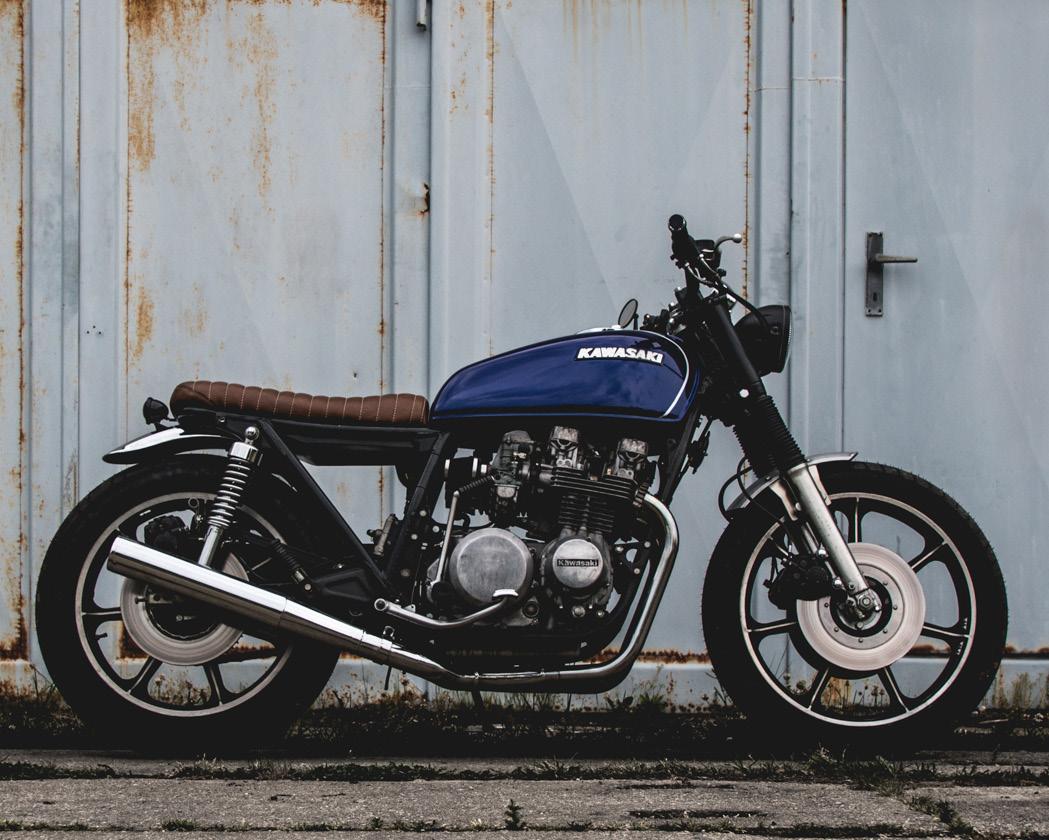
Motorcycle racing in the United States has always included dirt ovals, sometimes the same tracks used in horse racing for decades. Dirt-track racers evolved by the 1960s into specialized „flat track“ machines with unique, batch-produced frames from a variety of small builders (Red Line, Trackmaster, Champion, etc.), into which British, Japanese, or American engines could be installed. This was a third Golden Era of American racing (after board track of the „Teens and Dirt Track“ of the 1930s/1940s), popularized by the 1971 film On Any Sunday. It wasn‘t long before Trackmaster Triumphs and Harley XR750s began to appear on the streets of the United States and beyond, with lights and minimal road equipment, as a „hot roadster“ alternative to the café racer. Street trackers are road-legal versions of flat-track racers, with small tanks, wide handlebars, raised exhausts, fat tires, and no fenders.
In the beginning, there was the Roadster. In the early 20th Century, as factories began to offer mildly specialized machines (race replicas, super sports models, etc), the „ordinary“ motorcycle needed a sexy name, and one was borrowed from the automotive world, which inherited it from the term in a motorcycle catalog was 1910, as Triumph described a single-cylinder, belt-driven, fast touring model as their „TT Roadster,“ as distinct from a „TT racer.“ The term was more popular with cars, meaning a sporting convertible, and has been revived to describe motorcycles recently, to replace the term „naked.“ The „naked“ description was invented to sex up the revolutionary Ducati Monster of 1993, which had the audacity to remove all plastic bodywork, and celebrate the motorcycle as mechanical object. This was as an act of rebellion against a 1980s trend towards bike-as-plastic-appliance. Marketers are tired of „naked,“ and now describe unclad, unfaired motorcycles as roadsters.
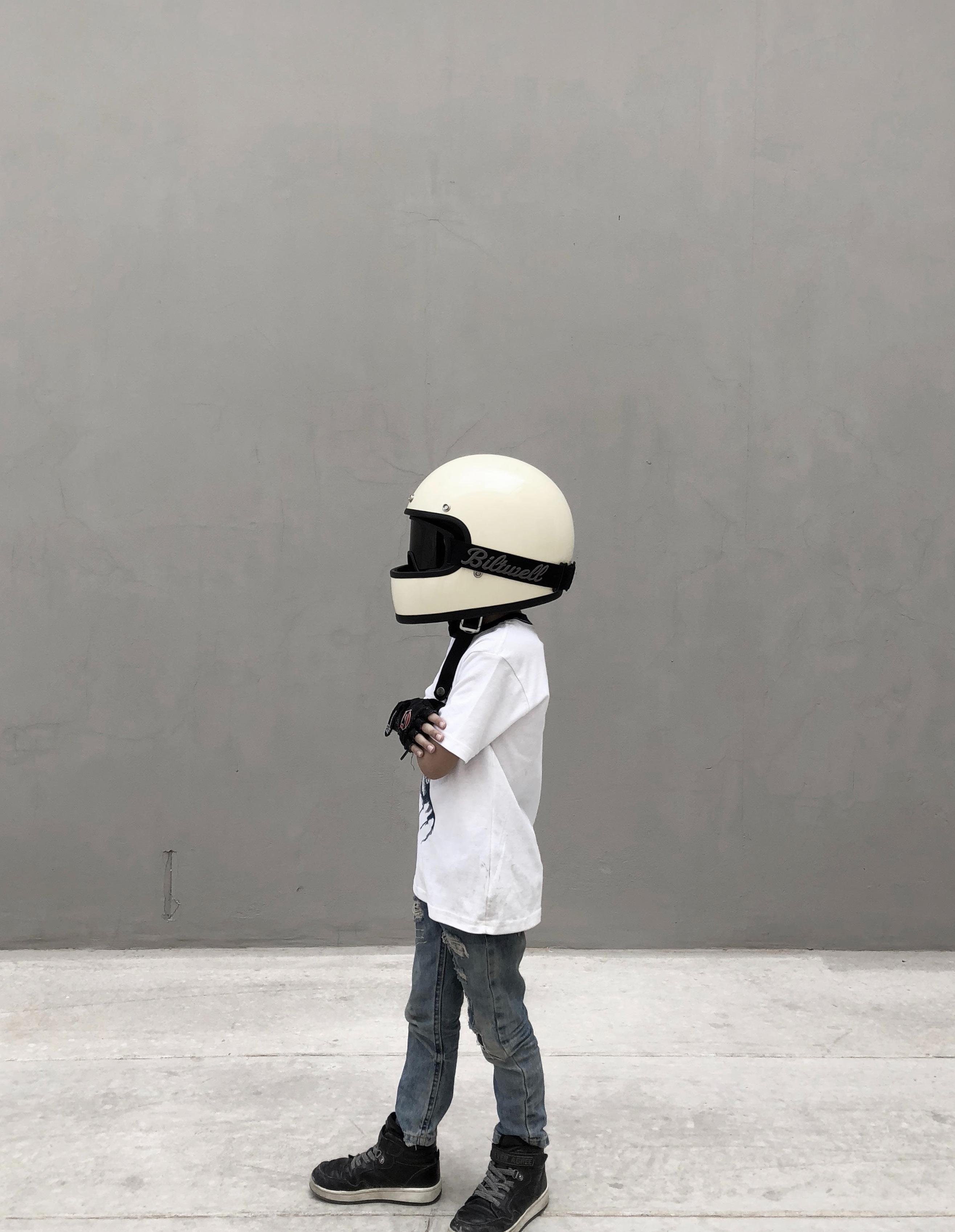
What’s it all about?
What is a Café Racer?
Café Racer is a lifestyle, it is a way of living. It is about riding motorcycles and being free. It is like a tattoo on your body that you are proud to show off to the world. It is a lifestyle that takes you to adventure trips and to places you wouldn’t otherwise go. It is about creating, producing, shaping, designing and riding in the ultimate machines. It is about expressing the best you in a world of mediocrity.
Café Racer draws inspiration from cultures of old. Vintage bikes, tailoring, leather jackets, hats, sunglasses, eye-candy, comics, rock ‘n roll, retro rock ‘n roll, vintage pin-up, fashion, art, the 1950s, 60s, 70s, 80s, 90s, 00s and beyond. This is a result of a lifetime of collecting, studying and watching.
Café Racer is the result of making the most of a small range of motorcycles. A small but well chosen range that’s balanced and narrow enough to stay manageable. A choice of two twins, a small displacement cruiser bike, a small capacity sport bike, a lightweight, but a powerful 650cc supersport.
Café Racer is about loving motorcycles in the way you want. It is about riding your motorcycle to the nearest store, being that rare bird who has to wait for no one. It is about adventure in the classic sense, travelling where you want and at your own pace, with no fuss. It is about taking up the challenges of city riding, touring, track days, big tours, long distance off-roading, long distance roads and the best “road kills” with the lightest, sharpest and swiftest machines on the market.
Café Racer is a mix of Americana, Japanese Import, European V-Twin, Italian Motorcycle, Spanish Custom, British Classic and Japanese F-Roads.
What’s so special about it?
Customization is Café Racer’s trademark! You can always expect to see custom details in the paint, the modified parts and the amount of unusual metal work. Custom, retro-style leather jackets, custom vintage helmets, gloves and the REDUCTION to a minium is what defines a Café Racer and its riders!
Café Racer is always pushing the limits and minimizing to an absolut minimum, whether your’re riding modifying or building a bike.
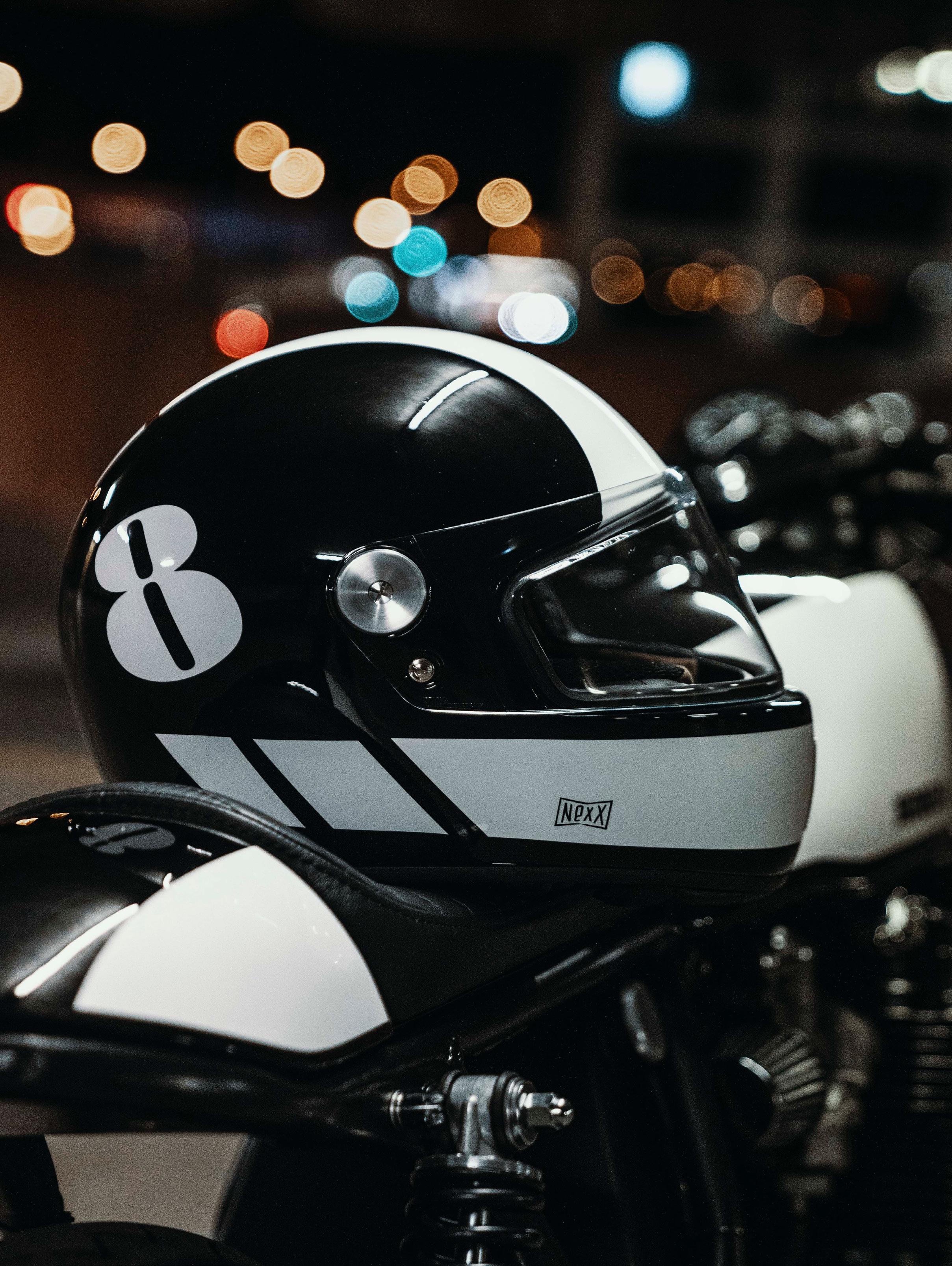
right gear is important to the riders appearance. Equipped with a caro-stitched leather jacket, some oldschool leather gloves, a simple but protective Jeans, nice boots and a unique helmet - the freeriding adventure can start!
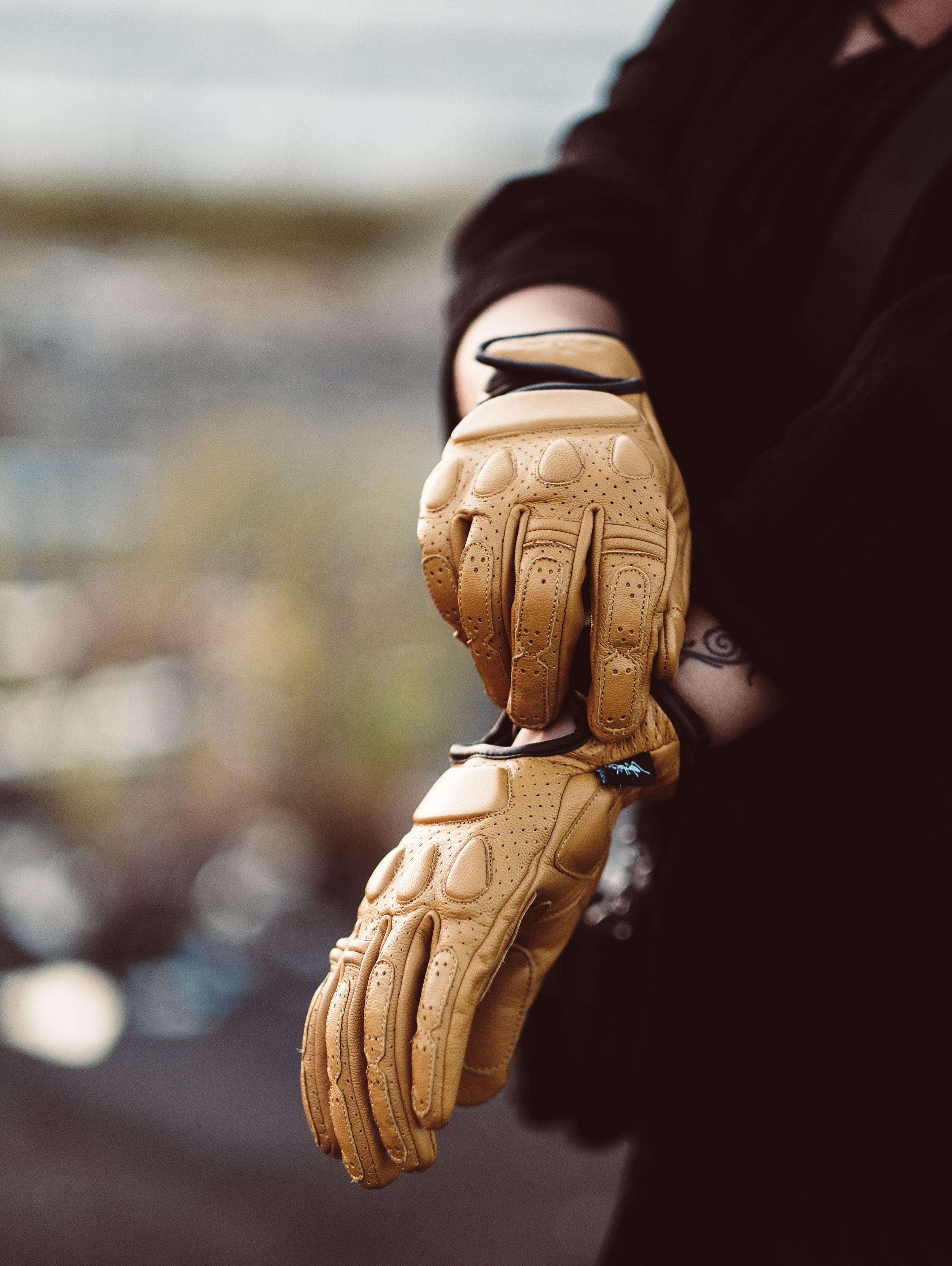
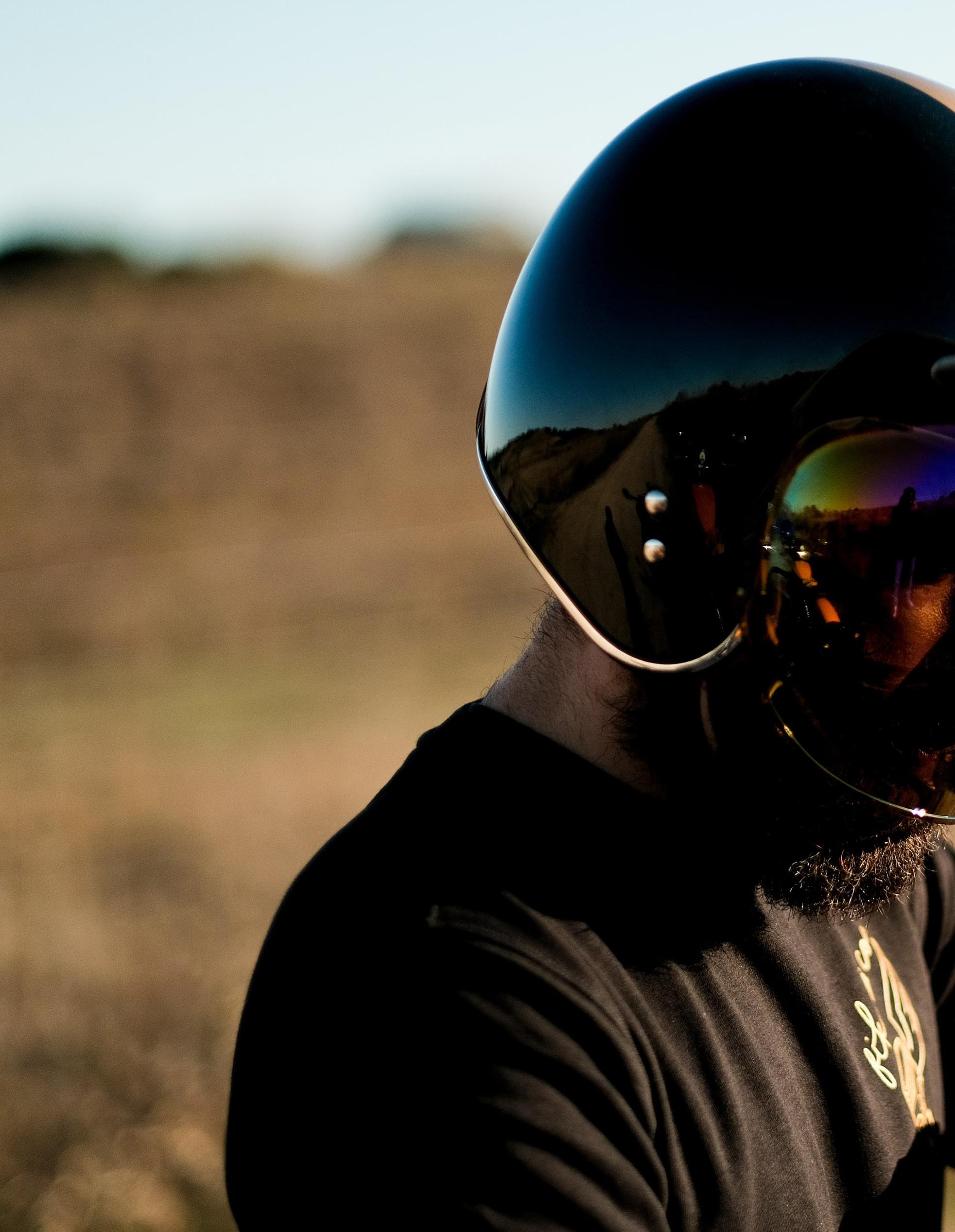

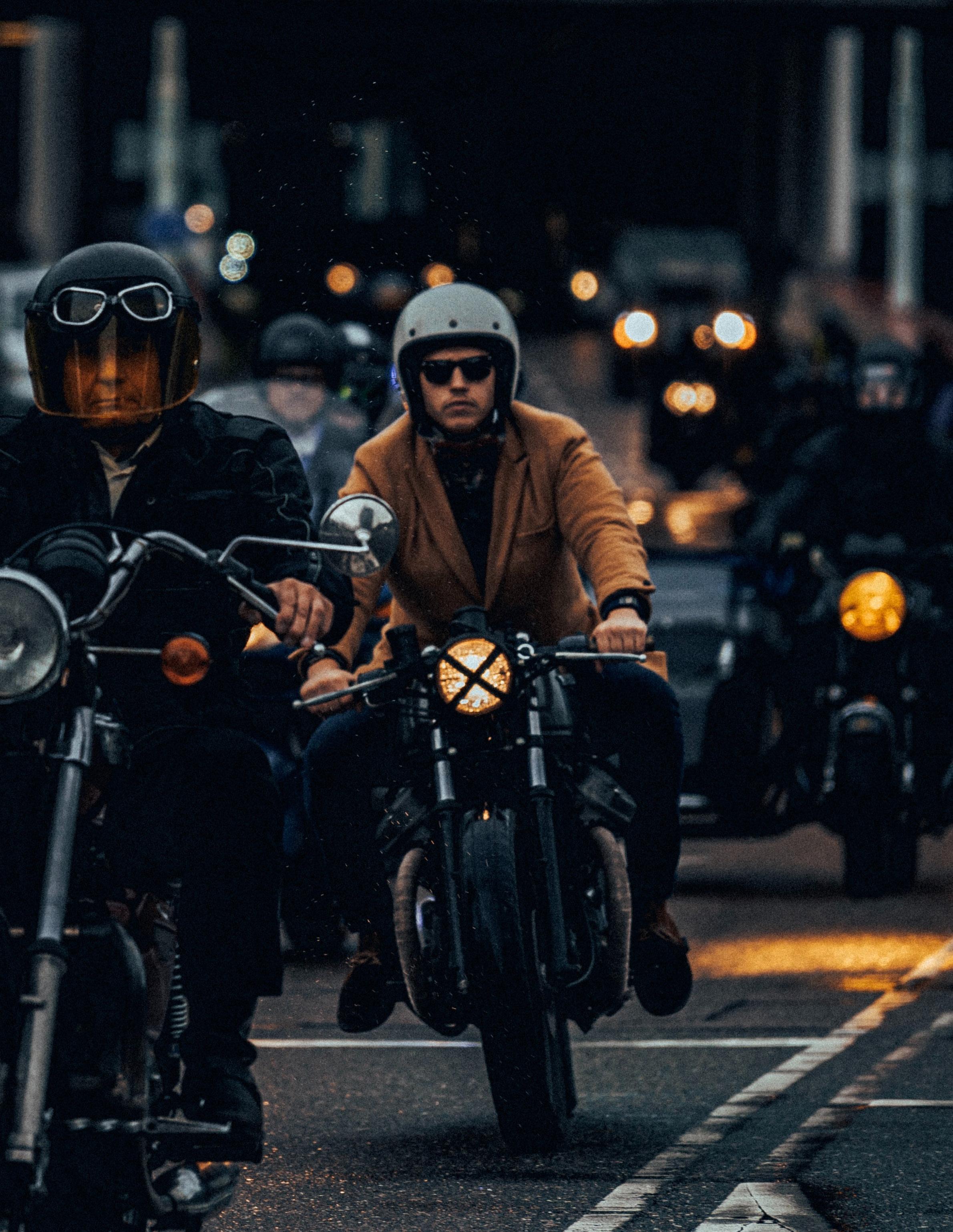
Over the years, we’ve seen many different movements within the motorcycle industry. Trends have come and gone but there have been few movements as influential and powerful as the cafe racer. These motorcycles first started appearing in 50’s England – though the culture soon thrived all over the world too. What’s striking about the cafe racer motorcycles is that most none bikers have probably not heard of them. Despite this, their impact was incredibly powerful, though it was fairly short lived.
However, the cafe racer is seeing something of a comeback on the streets. We’ll start with a history of the original racers and conclude with the modern-day cafe racers that are on the scene today. Of course, in between all of this we will touch on a few iconic parts of the original scene as well as taking a look at some of the racers themselves.
Cafe Racers came to popularity in the 1950’s on the streets of England. It was a subculture born out of the rock n roll music scene. Back then, traditional rock n roll music was very fast paced and incredibly raw. Those that loved the music saw it become a huge influence on their lives, particularly in what they drove. Soon, rockers wanted something that reflected the music they listened to, something fast and aggressive. Consequently, the first cafe racers were born.
These motorcycles were distinctive in their design and riding style. You could spot a cafe racer from a distance, and hear it from a mile away. They started off as classic British-made street bikes, but the rockers that rode them wanted to customise them for performance – most notably speed. That’s how Café Racers were born!
will always remain, the cafe racer motorcycle is iconic and will live on in memory forever.
They were stripped down and made more lightweight, with dropped handlebars and racing fuel tanks fitted to them. The original street bike seats were ripped up and swapped for something designed to only fit one person. If you ever saw someone riding a cafe racer, you can bet they’d be on that bike alone. Of course, exceptions were made whenever a female companion was about!
So, cafe racer motorcycles were designed to be fast and ruthless. As a consequence of this, they had a huge impact on the industry in later years. Many believe that if these reckless rockers had never altered their street bikes, we wouldn’t see the modern superbikes that are on the roads today. Having seen what a cafe racer is, one question still remains; where does the name come from? Well, the people that designed their bikes in this fashion were often in their mid/late teens.
Once they’d kitted out their racers, they’d all ride up to transport cafes and wait outside them. You’d see these huge groups of kids all with their fast bikes just hanging out around the cafe. They’d wait until someone drove past on a fast bike, and would hop on theirs and challenge them for a race. Back in these days, there wasn’t the concern for road safety that there is today.
However, it was only when they returned to the cafe after the race that the term ‘Café Racer’ was born. It’s thought that these cafes were primarily occupied by long distance truckers who were having a rest from their long drives. They’d all laugh at the kids as they came back in and tell them that they weren’t proper racers, they were just cafe racers. This was intended as an insult, but the kids embraced it. They took this name with pride, and the Café Racer scene was truly created.
What does the future hold for cafe racers? It seems like they’ll stay popular for as long as retro things are still desirable. Also, we should see more and more off the shelf models as companies try and cash in on this trend while it lasts. No matter what, one thing
Have a look at the history of cafe racers, you can pinpoint certain places that were iconic in the formation of the movement. On the North Circular Road in London, there was an establishment called the Ace Cafe. It opened in 1938 and was a classic truck stop cafe that soon became one of the biggest and most famous locations for bikers to meet in the whole of England.
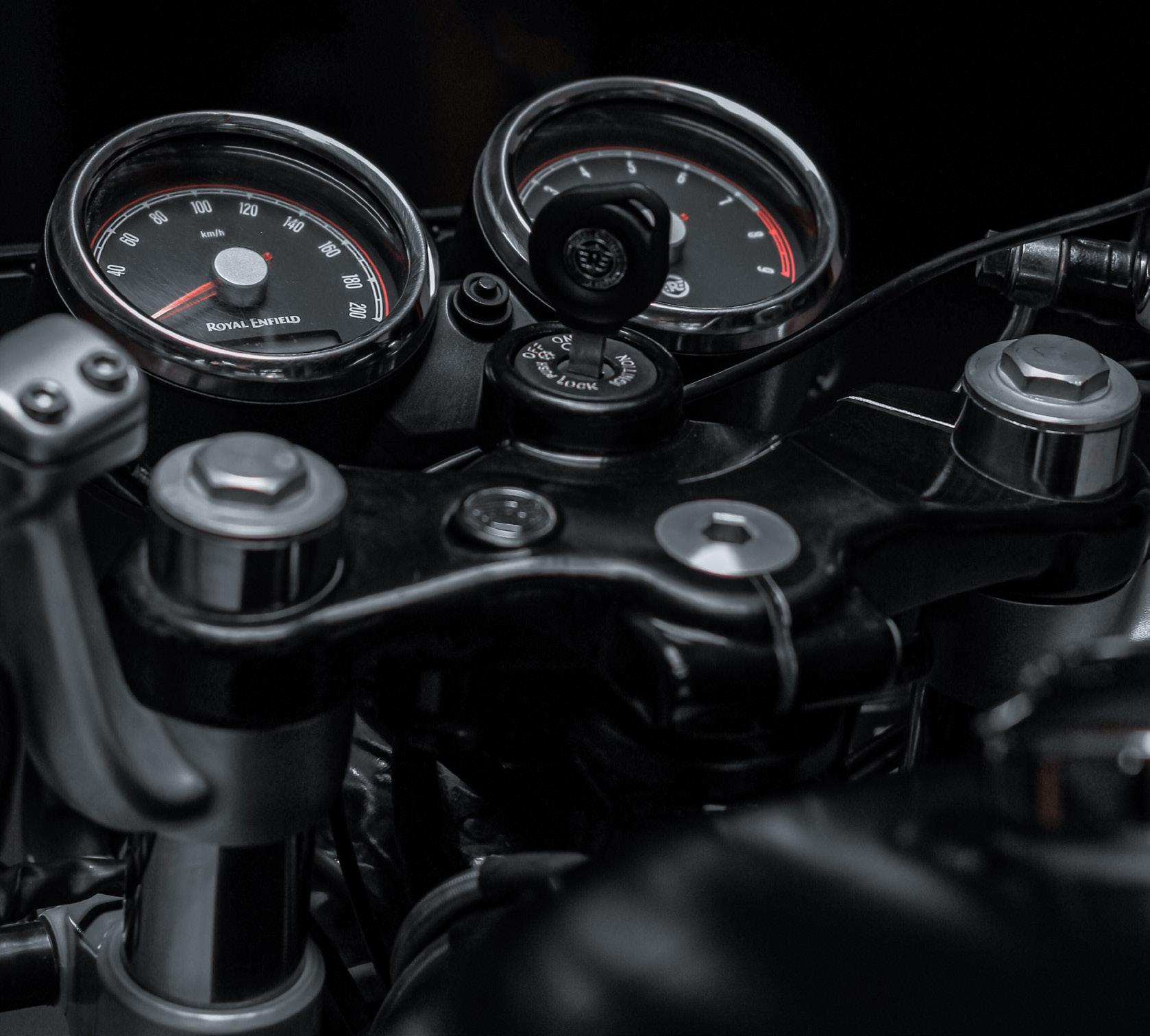
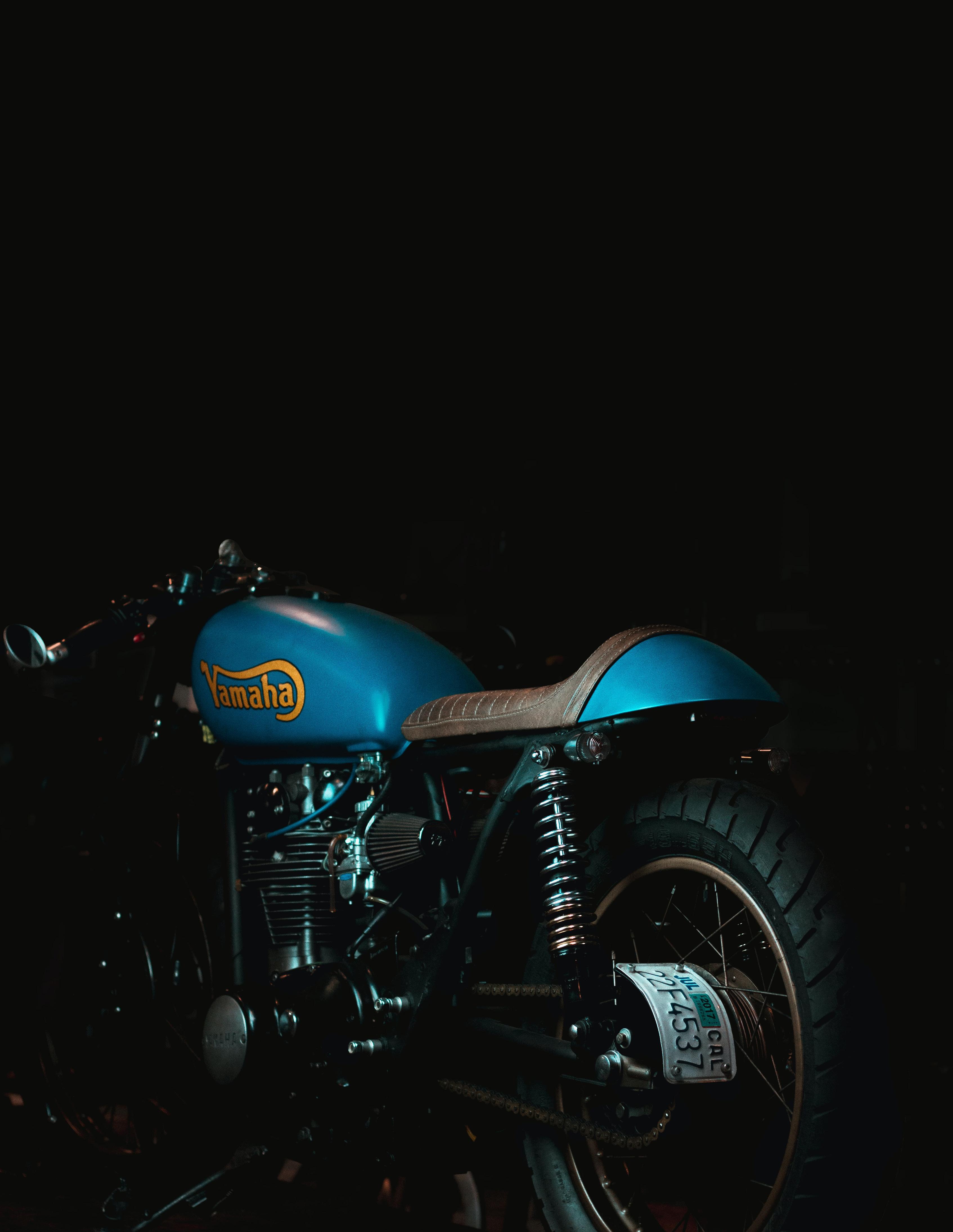
Before the rockers and their cafe racers came to town, Ace Cafe was seen as something of a revolutionary cafe with a difficult past. The original cafe was damaged during WWII and re-opened in 1949. It had service pumps, a repair shop, and even a washroom for people to clean their vehicles. Soon, thanks to the rise of rock n roll, the bikers came calling. One of the main reasons teenagers went to cafes with their cafe racers was to listen to music. Rock n roll wasn’t played on radio stations, so, one of the only places you could hear it was on jukeboxes in transport cafes like Ace. s a consequence, the cafe was often flooded with bikers all keen to listen to music and organise races on their customised bikes.
Ace Cafe was the birthplace of many racers, and people would even start rock n roll bands there. It was even used as the set in one of the biggest British films of the 1960’s; The Leather Boys Unfortunately, the cafe racer scene didn’t last forever, mainly due to changes in the social climate and the increase in cars on the road. People in England started to purchase more cars, making motorcycles less relevant. Consequently, the legendary Ace Cafe struggled for regular business and had to close down in 1969. But, in 2001, and the cafe was reopened to the public!
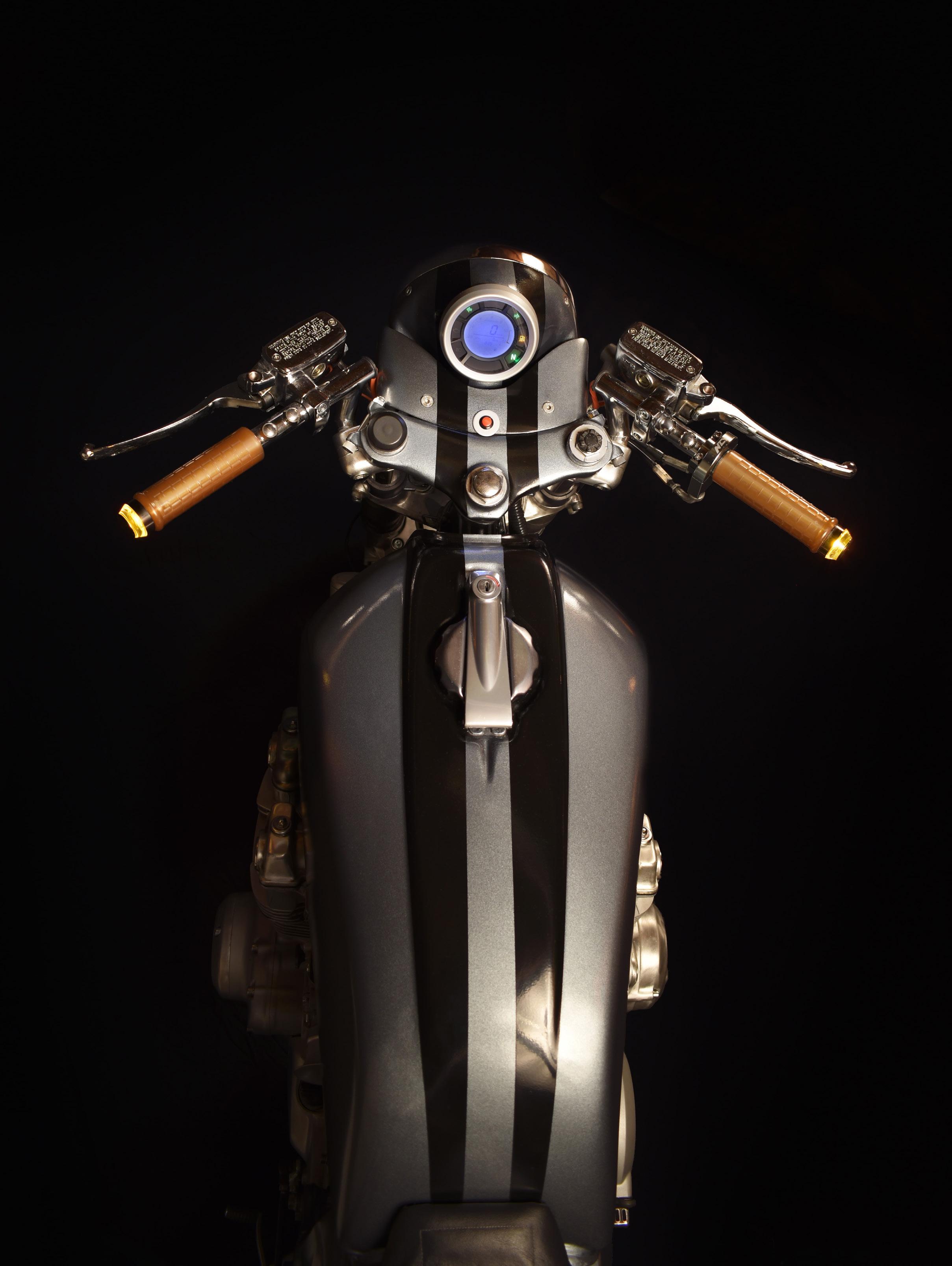
The Café Racing scene came to an end in the late sixties but its impact lived on. The things these ton-up boys did to their bikes helped influence modern motorcycle designs. Fast forward to today and the memory of Café Racers lingers on. So much so that the bikes are starting to make a fashionable comeback. Nowadays, retro things are becoming incredibly desirable and popular. People love looking backward and seeing all the cool things that used to be around in the old days. When the Ace Cafe reopened, it plucked at people’s nostalgic heartstrings and, once again, became something of a catalyst for the cafe racer movement. These days, thanks to road regulations and strict laws surrounding speeding, the cafe racer scene isn’t what it used to be. You won’t find groups of teenagers in leather jackets listening to rock music and racing their custom motorcycles everywhere. However, the bikes themselves are certainly making a comeback. People started to take old bikes from the 1970’s and customise them to turn them into the classic cafe racers from the fifties and sixties. Motorcycle enthusiasts started to want something that differed from what was on offer in this current market. They didn’t want a chopper or a modern street bike or pay loads for a high-performance sports bike. Instead, they saw individuals and companies building these custom cafe racers, and loved it!
The Café Racer has experienced a boom so big that some of the largest bike manufacturers are getting involved too. The likes of Yamaha and BMW have contacted independent motorcycle builders to create customised versions of their own street bikes. There are even a few off the shelf cafe racers being released by top manufacturers too.


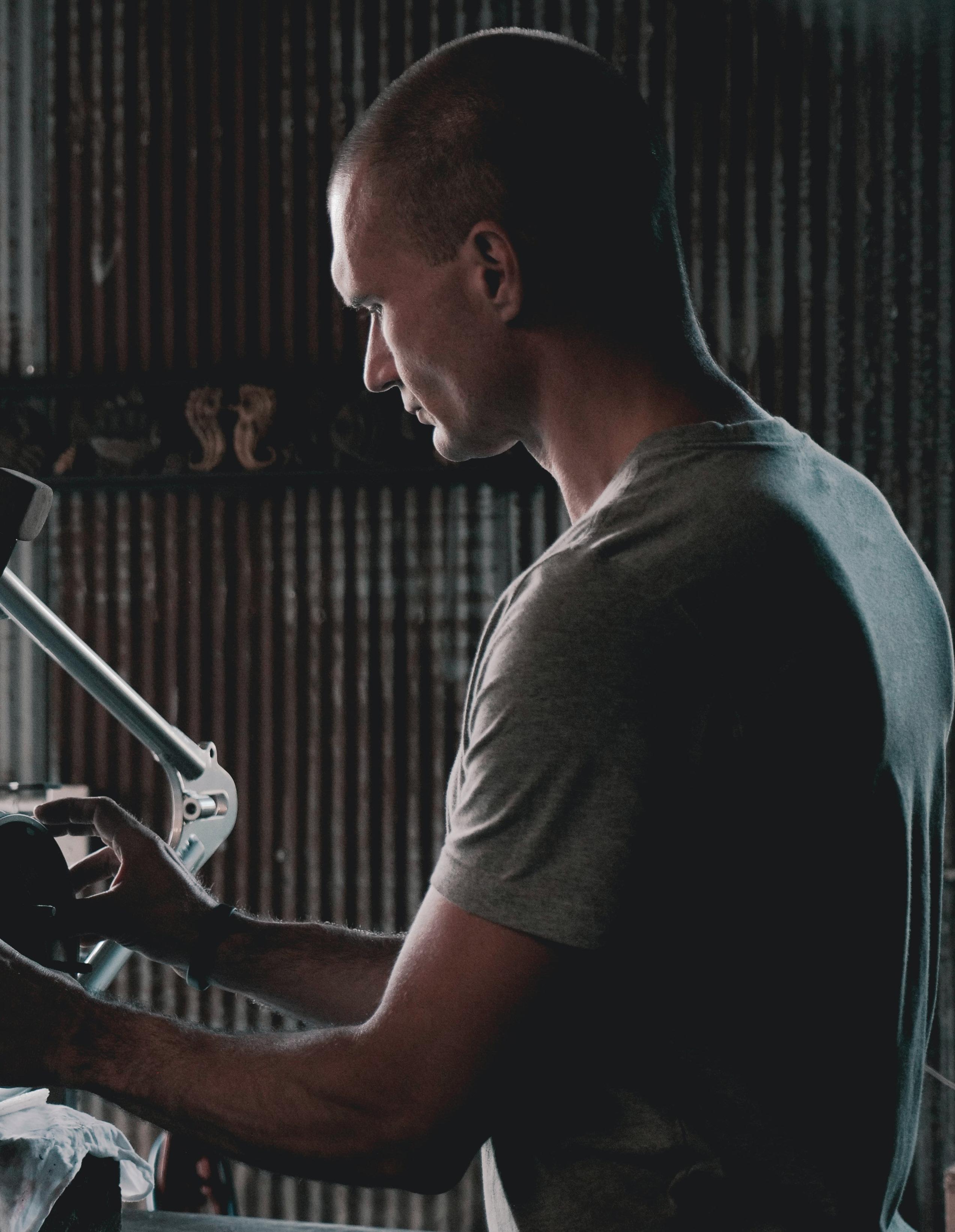
There are so many indicators out there, you can‘t really tell which are the best. No doubt though - the ones by motogadget are one of the best for sure!
The headlight - or shuold we better say the „head“? The shape and the tech inside the headlight is decisice for the look of your Café Racer - LED or halo?
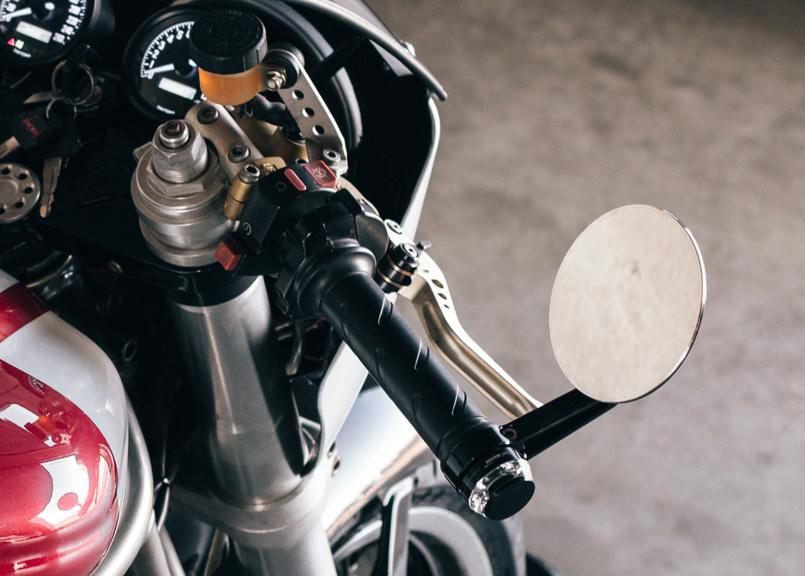
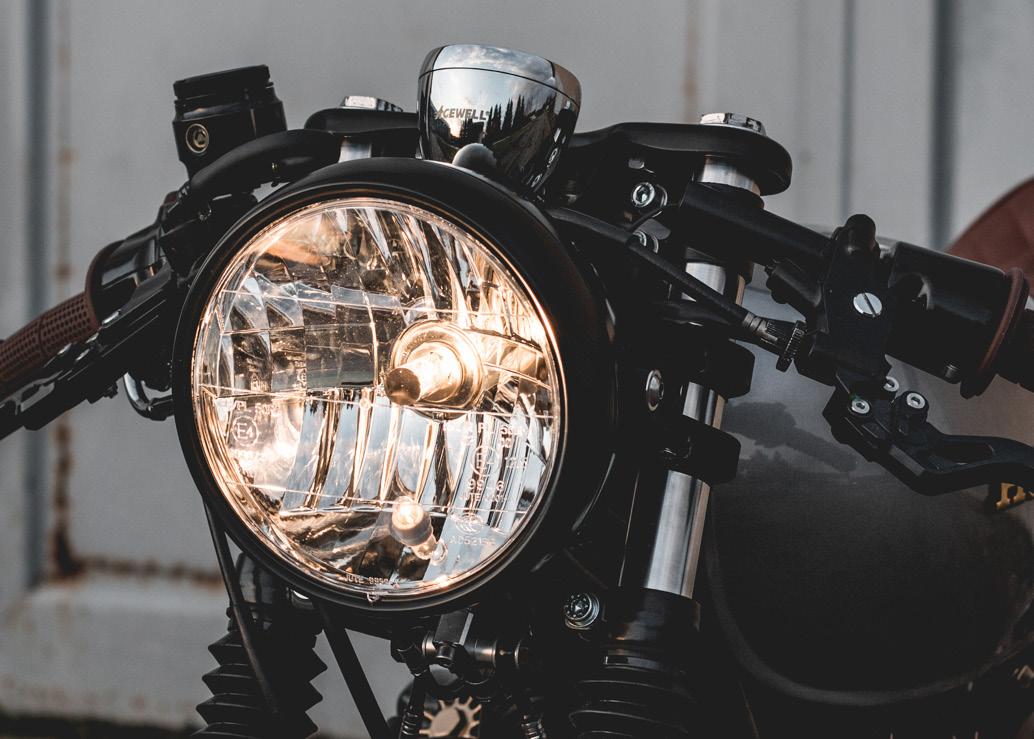
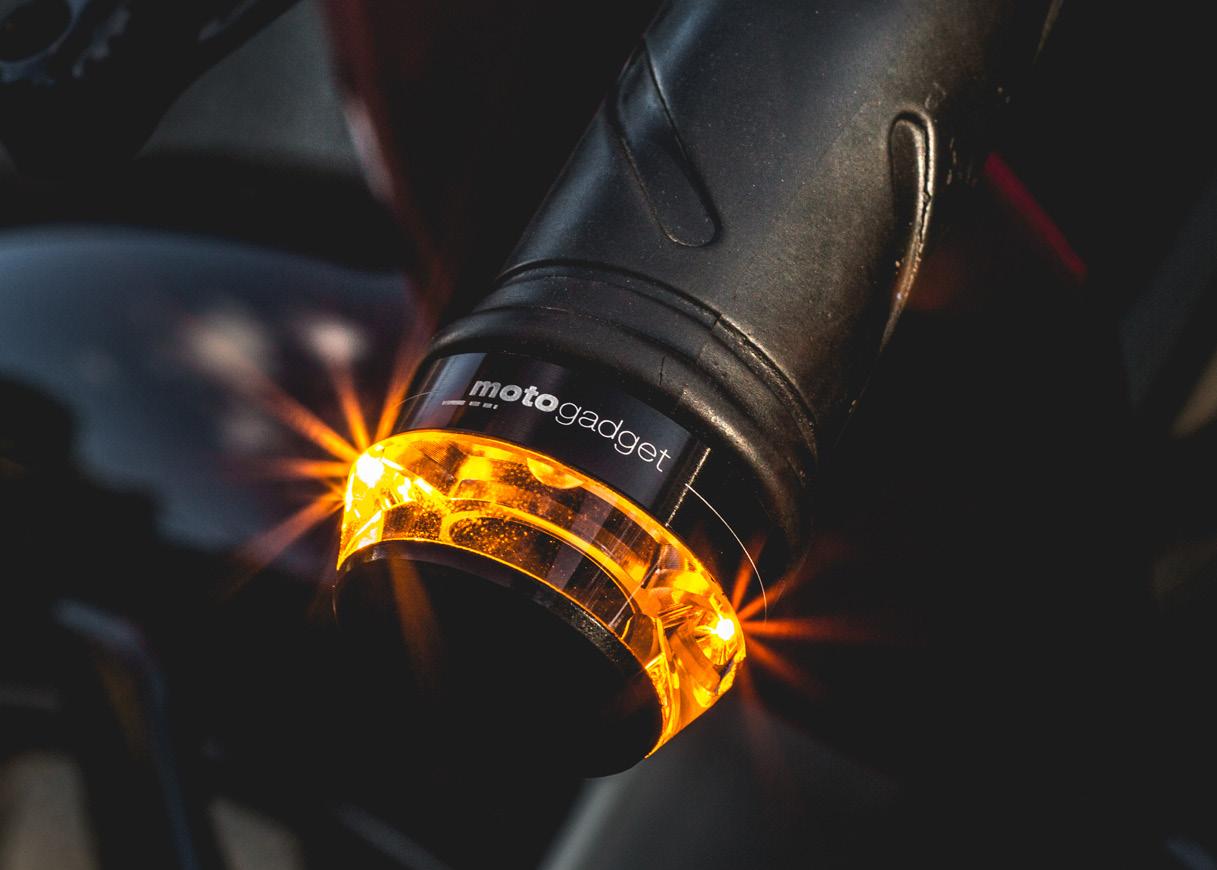
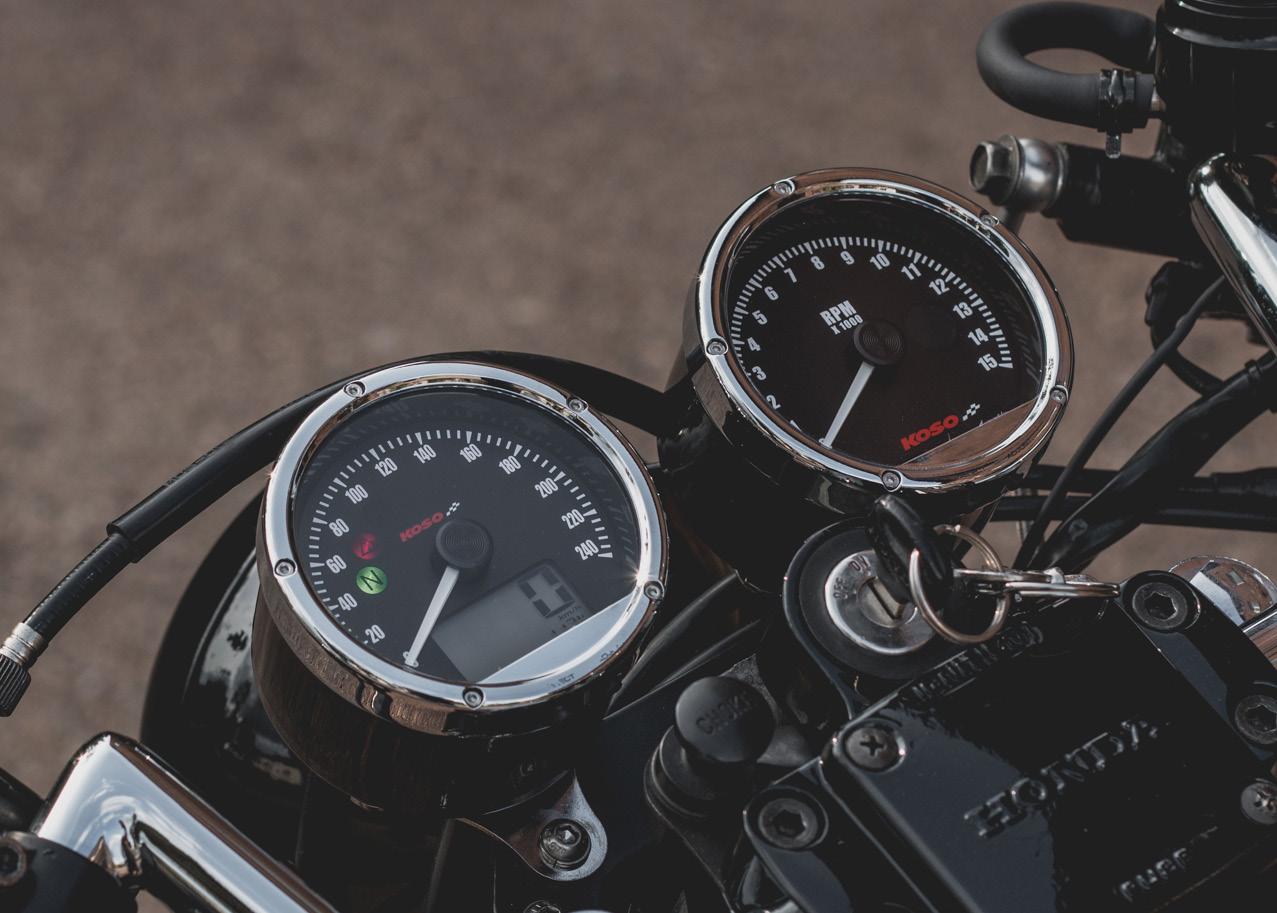
You have to chose wisely, as the speedo‘s designs is one of the form shaping elements in your build. What do you prefer, oldschool newschool?
Mirrors - some use them, some do not. Who looks back though? Take one or two - it depends on the men in blue. If your bike is before 1990, your‘re good to go!
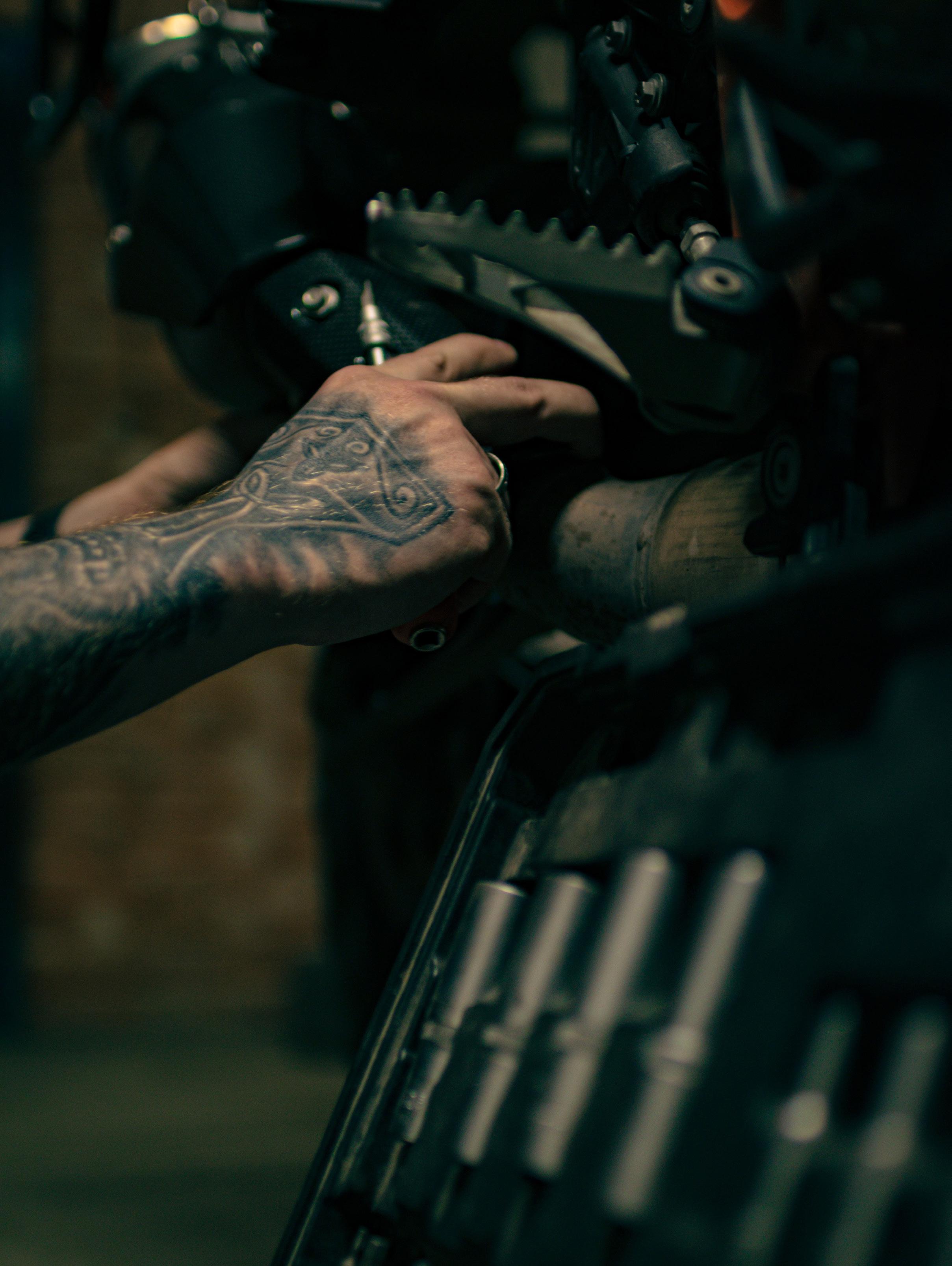
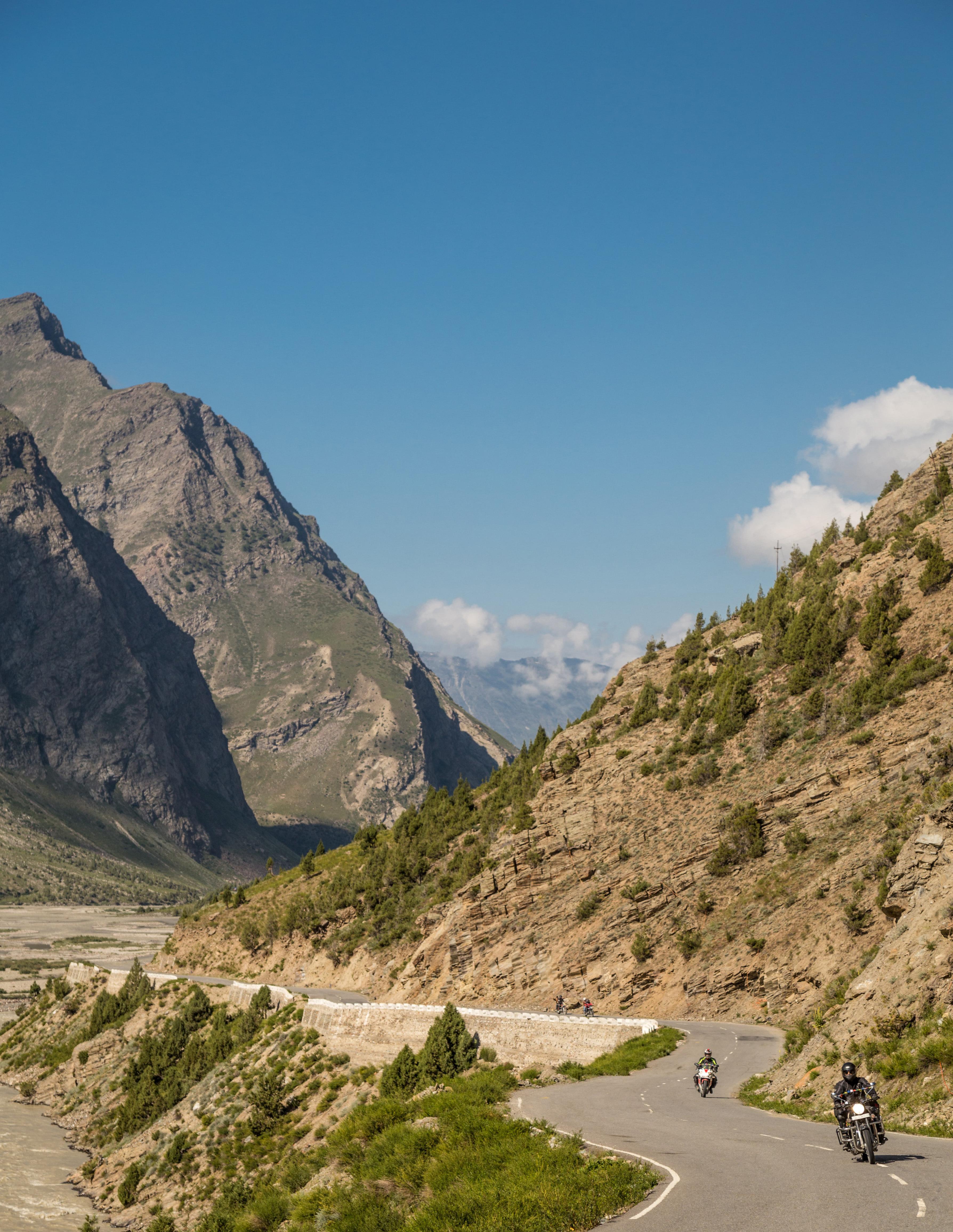
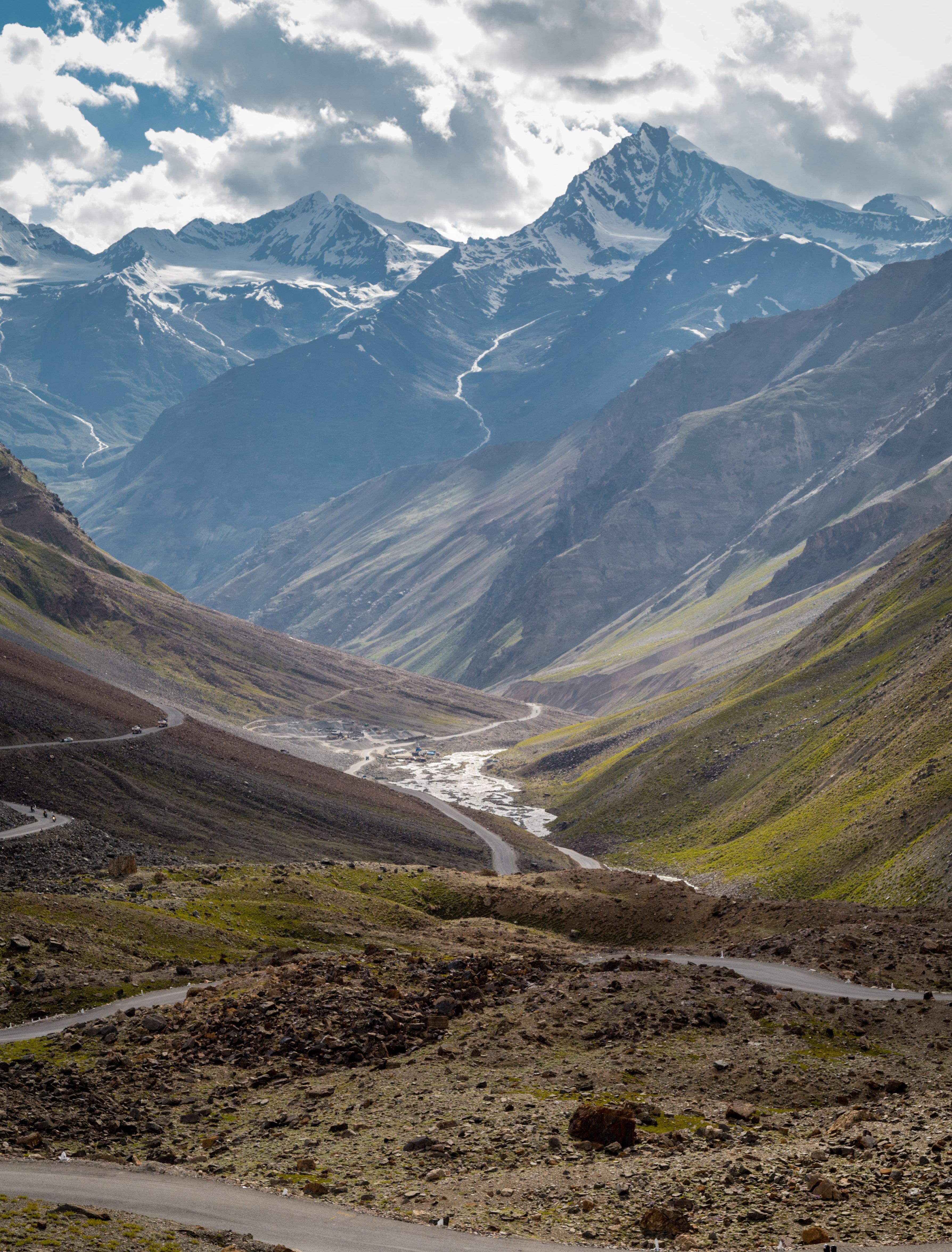
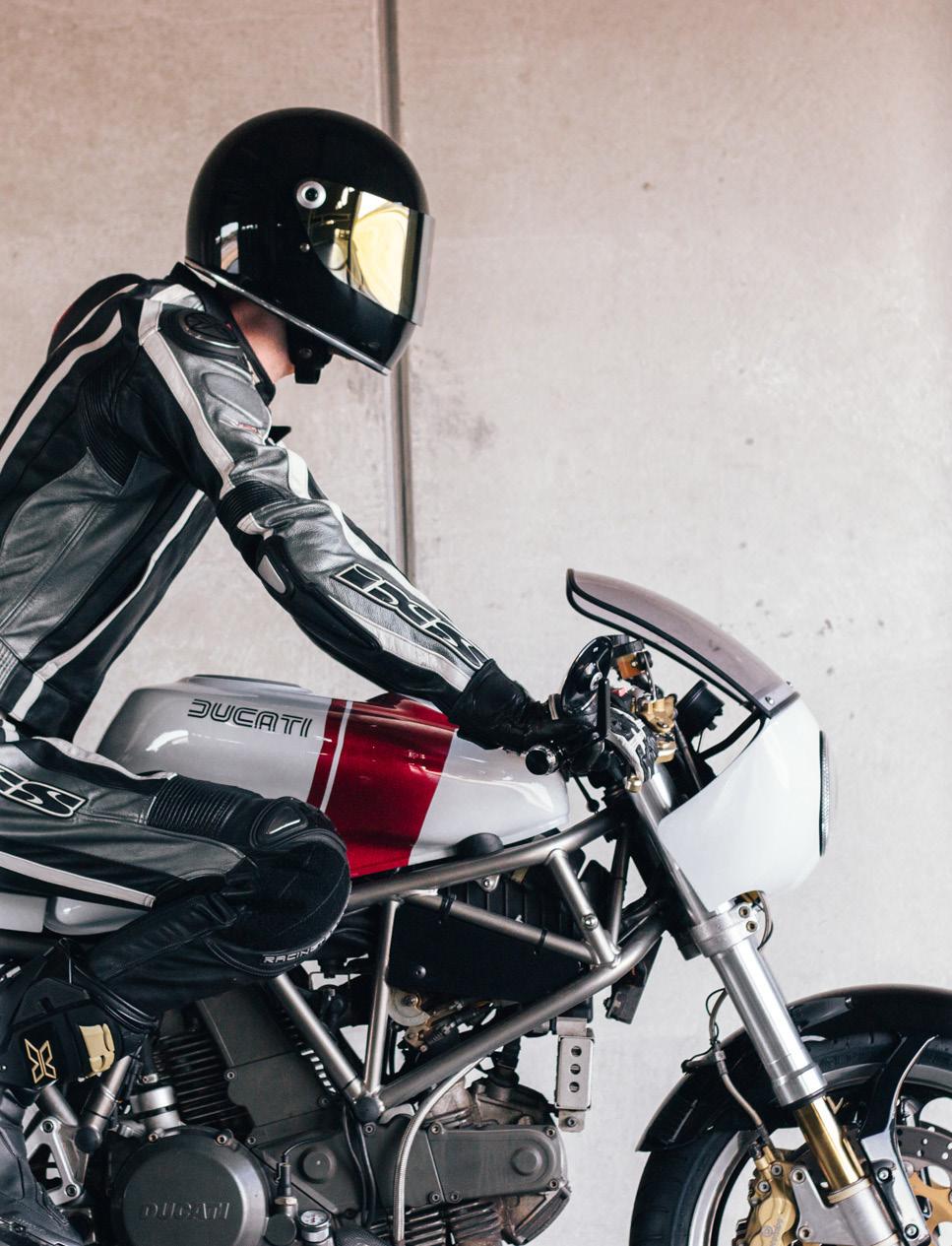
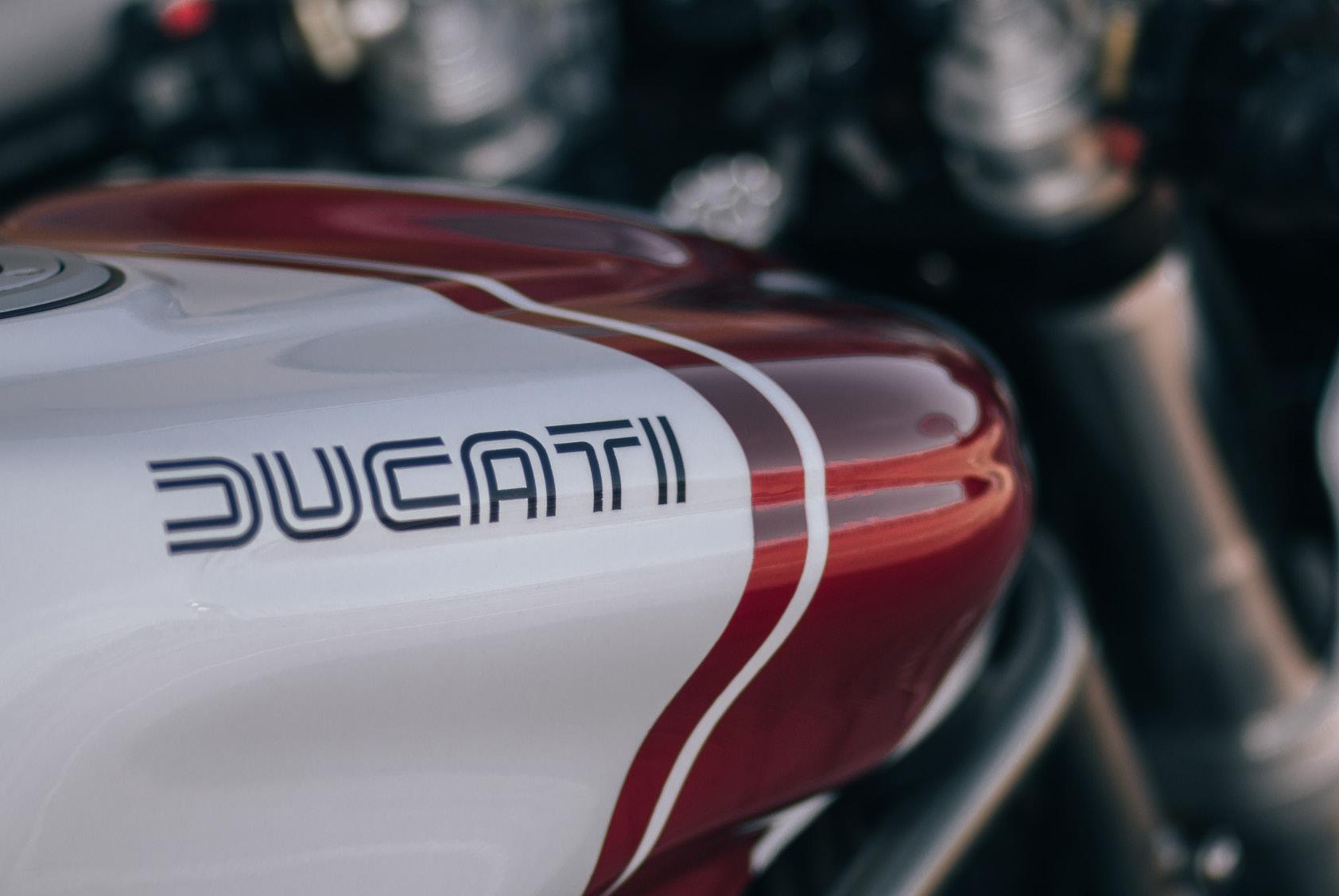

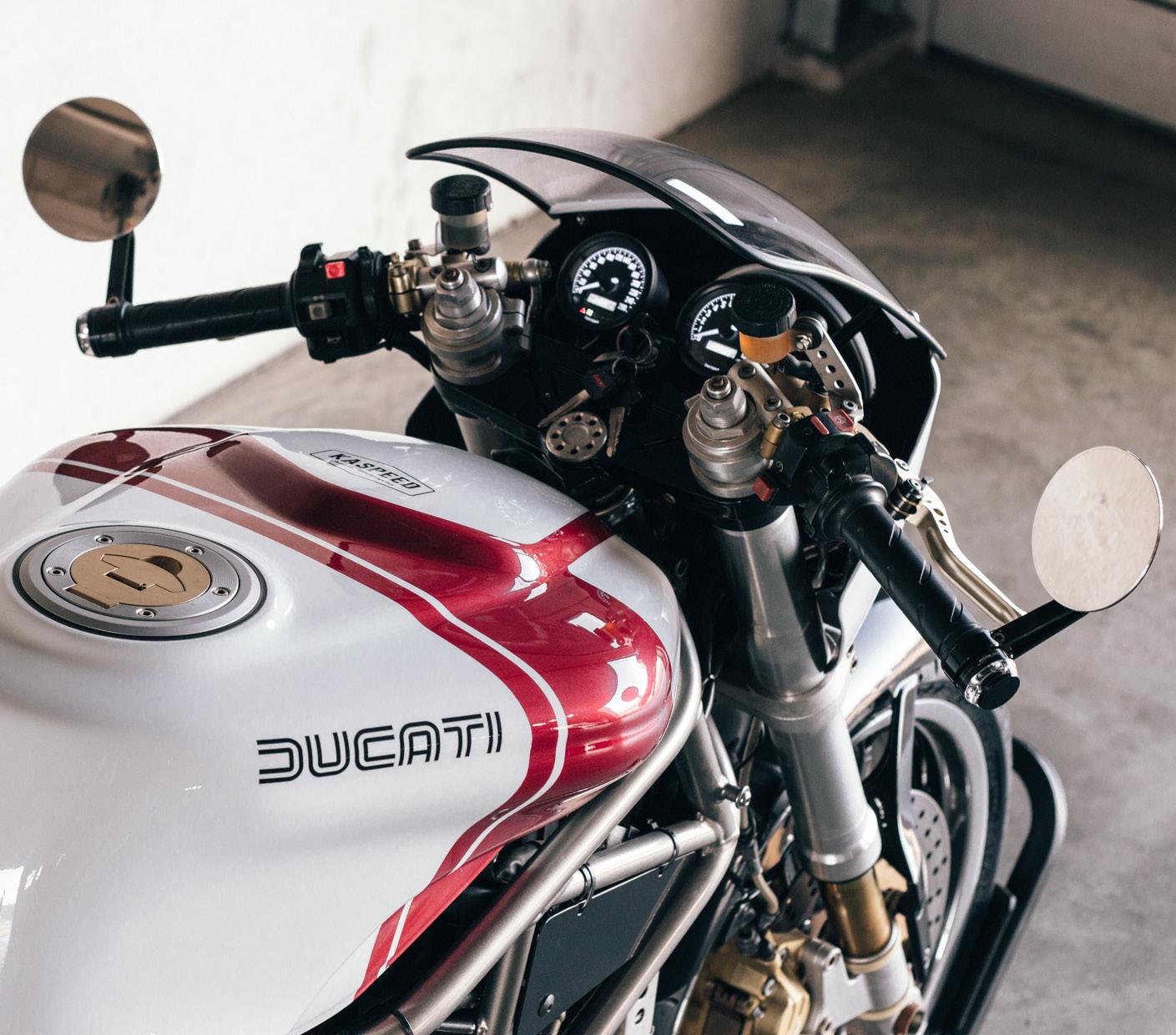
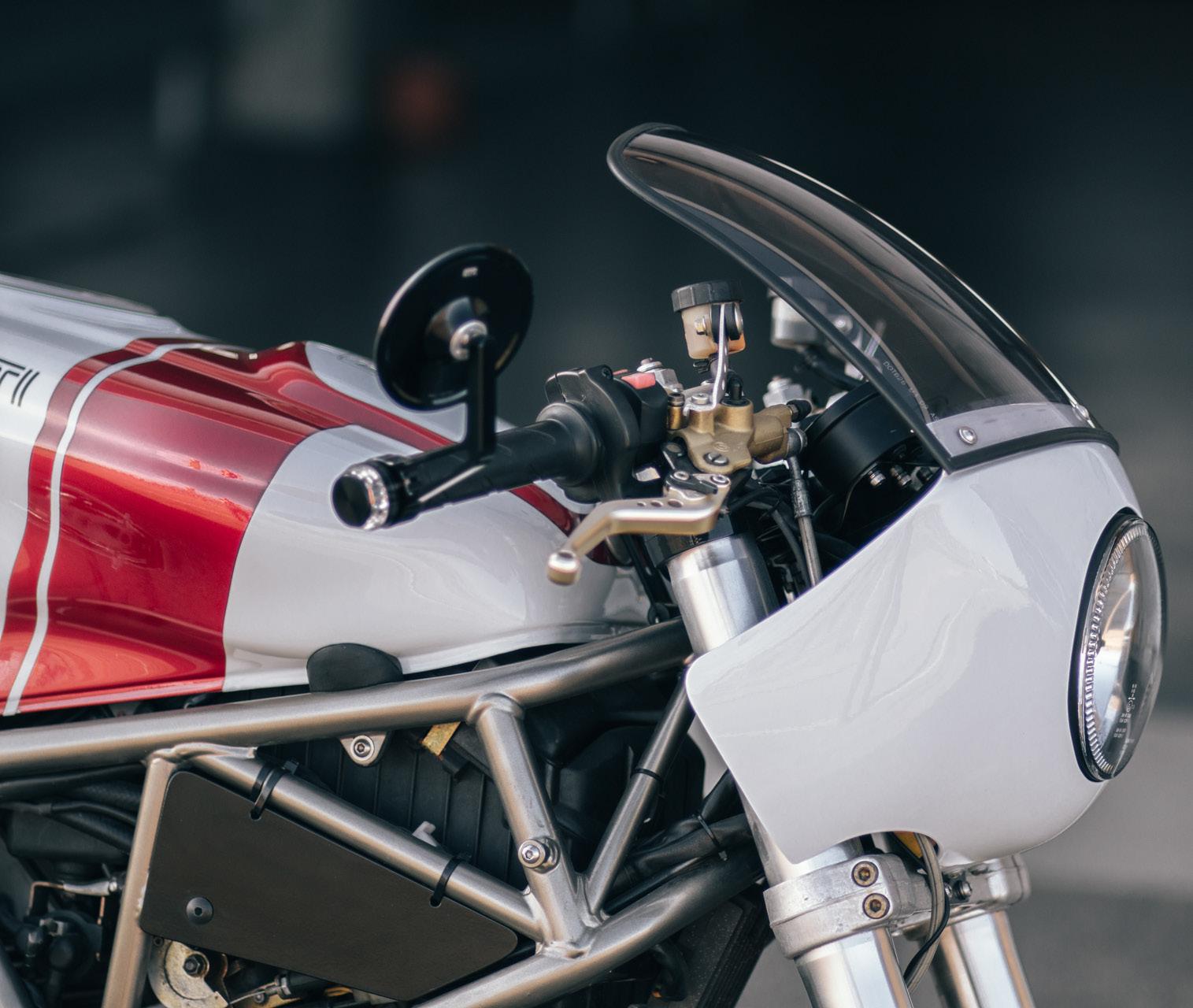
With the reassembly of the bike a headlight with LED parking light ring was mounted to give the front end the modern touch we were aiming for. Two modern retro gauges from Daytona were installed and Motogadget Motosign Mini motorbike warning lights in black were integrated into the upper triple tree via CNC machining. In addition, the bike got LSL levers for the Brembo brakes, Motogadget bar-end indicators. It also comes with a stainless-steel license plate mount including Motogadget mini indicators as well as a small rear light, integrated in the rear tube. The wheels are now hugged by Pirelli Diablo Strada tires. Of course, the Ducati is fully road-legal in Germany.
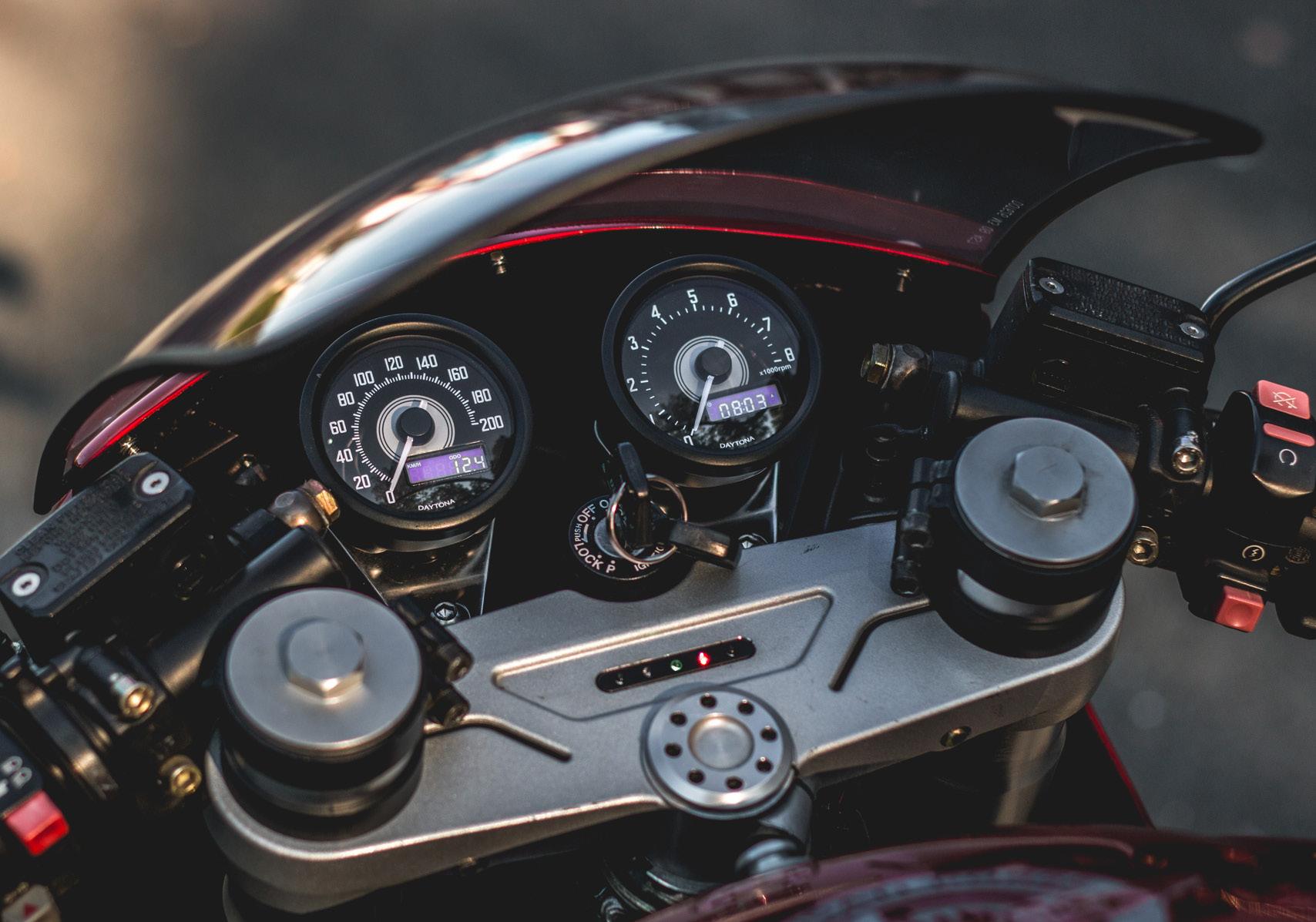
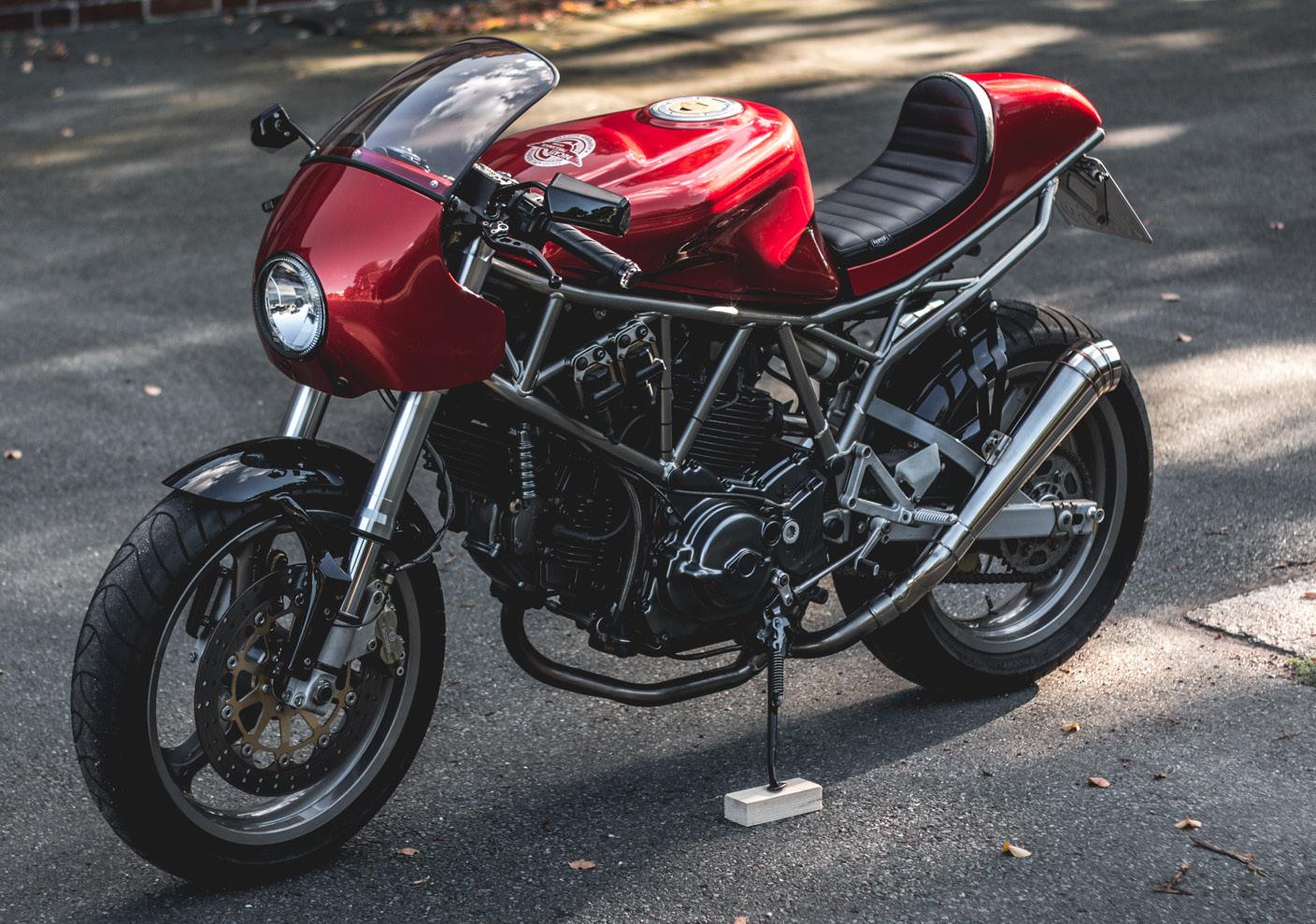
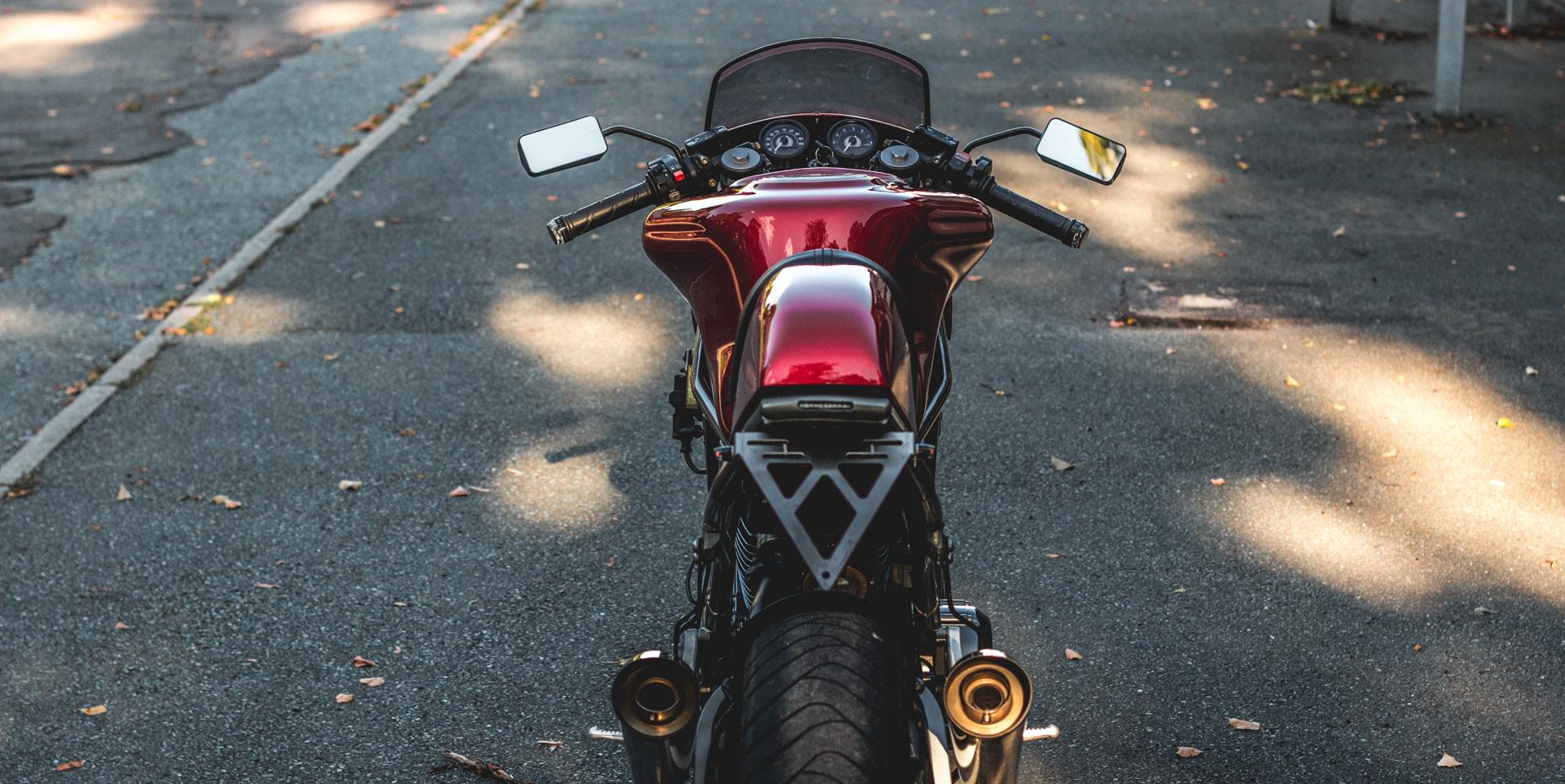
Before taking the hole motorcycle apart the rear frame was extensively modified. It was tightened towards the rear end, shortened and simplified so only a single rear tube remains. Finally, the hole frame was de-tabbed. We wanted to create a seamless connection between front and rear bodywork from the front fairing all the way to the seat cowl. Starting from the front, we found a distinct front fairing with Moto Guzzi Le Mans style, that was shaped to support the classic and racer like look. It was also adopted to a smaller front light diameter. In the middle of the bike, we cleaned the gas tank from the pad to add the needed flow. For the rear end a hand-built seat cowl was shaped from scratch with all mold fabrication done in-house. Also, the final lay-up with carbon-fibre, Kevlar and fibre glass was done at the workshop. A fitting single seat was made by a local upholsterer.
While completely stripping the bike, we refurbished all worn parts and integrated the new electronic components. The exhaust manifold was polished and we fitted two GP-style exhausts with custom mounts to underline the modern racer intention. We wanted to keep the paint scheme simple to let he shapes speak - the logo on the gas tank is a reminder to Ducati’s racing heritage. The paint is finished in Ferrari Rosso Fuoco which is a sophisticated three-layer paint. We actually do all paint work professionally in-house, since one of us is a trained automotive refinisher. The engine and frame got a new layer of paint as well. Original colours were used on the frame and wheels. A fitting dark grey metallic paint was chosen for the engine to create a little contrast. The engine paint was worn down and half gone, probably from contact with clutch fluid and oil.

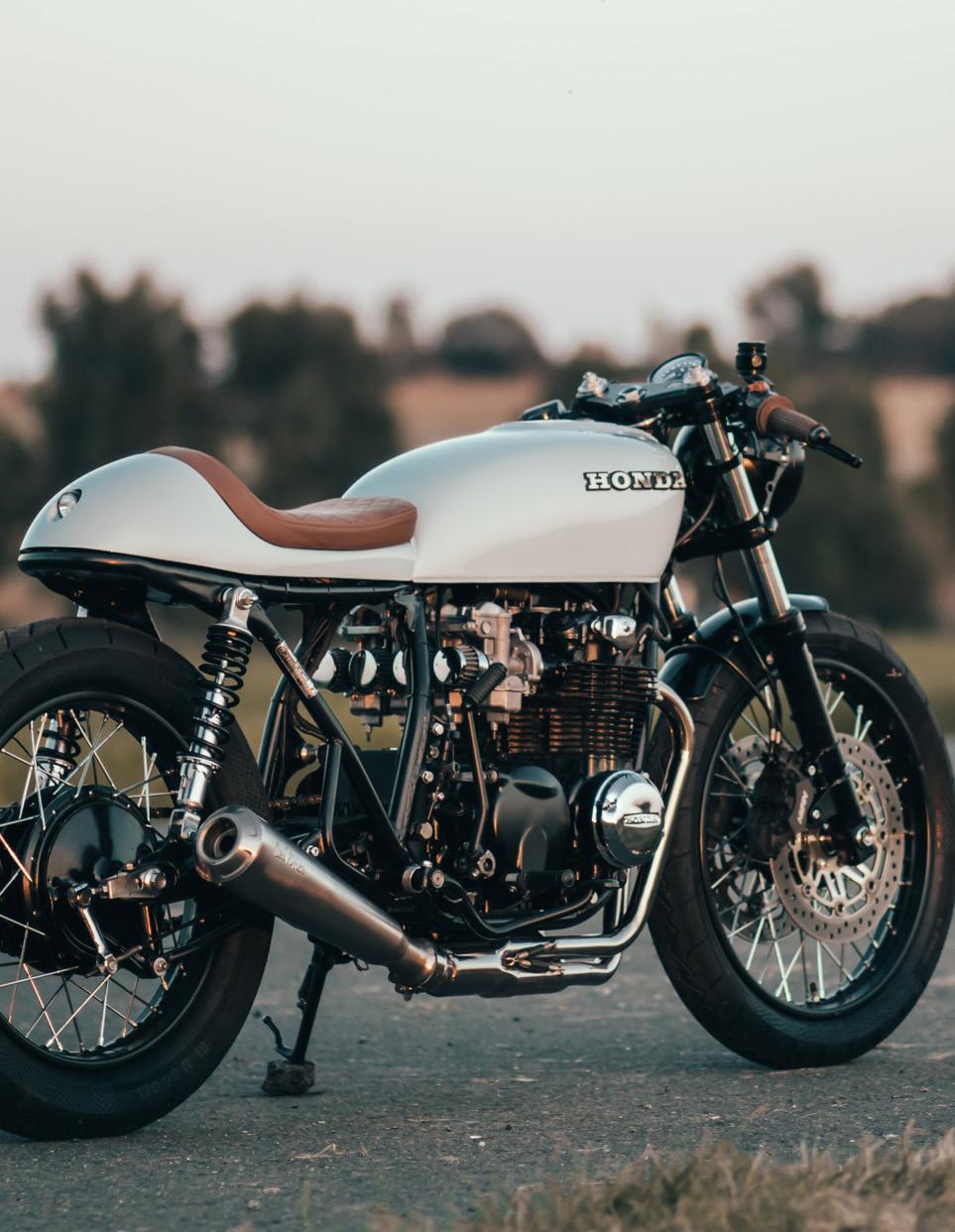

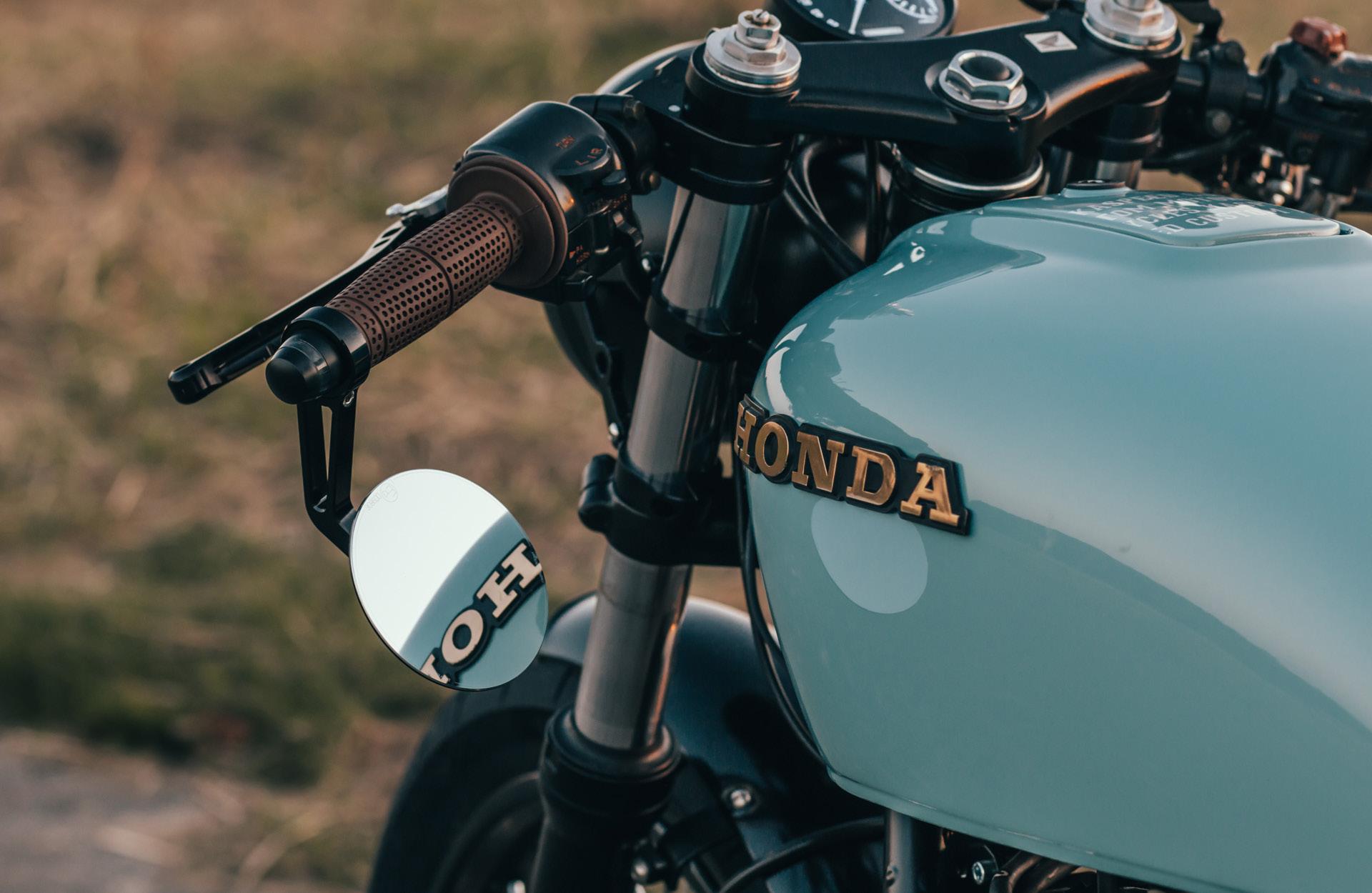
Clip-ons with fitting light brown rubber grips, refurbished handlebar switches, new probrake levers
New classic café racer style seat with custom upholstery in light brown genuine leather and stitched logo made by a local upholsterer
Black painted engine housing. all other black parts were powder coated, such as forks, triple clamps, frame and springs
Lightweight lithium-ion battery under the seat
New classic LED tail light integrated into the seat cowl and new matte black retro headlight handle bars indicators
Pod filters and bigger main jets in the ultrasonic cleaned, rebuilt and tuned carbs
We got the bike in pretty bad condition and partly disassembled. Not even a fuel tap or chain came with it. But on the other hand, the bike was mechanically fine after we put it back together to start working on it.
The 4-into-1 exhaust could be kept, and the backwards relocation of the footrest system was a good idea, too
Ready for the German spring, which is just around the corner these days. The ancient front brake had to go for a newer double disc brake setup from a CB400N.
We envisioned it to be a classic racer with all traditional café racer style elements such as a low and slightly forward stance, distinct straight lines, clip-ons and a classic seat cowl. upgraded brakes, functional tires for better road use were in sight as well.
Cleaned out frame and electronic boxes hidden under the seat cowl shortened aftermarket
Continental ClassicAttack tires, handmade in Germany for classic bikes

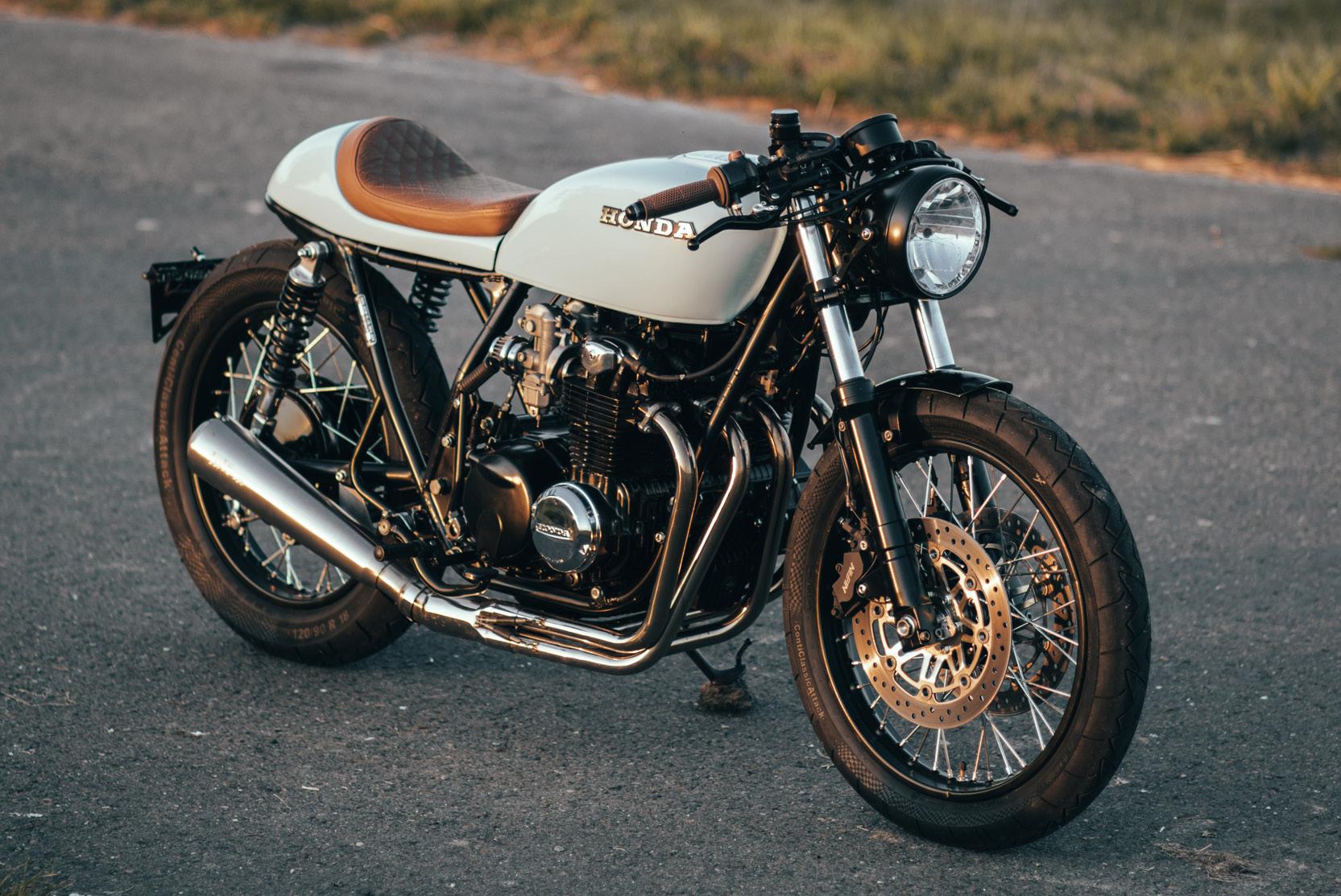

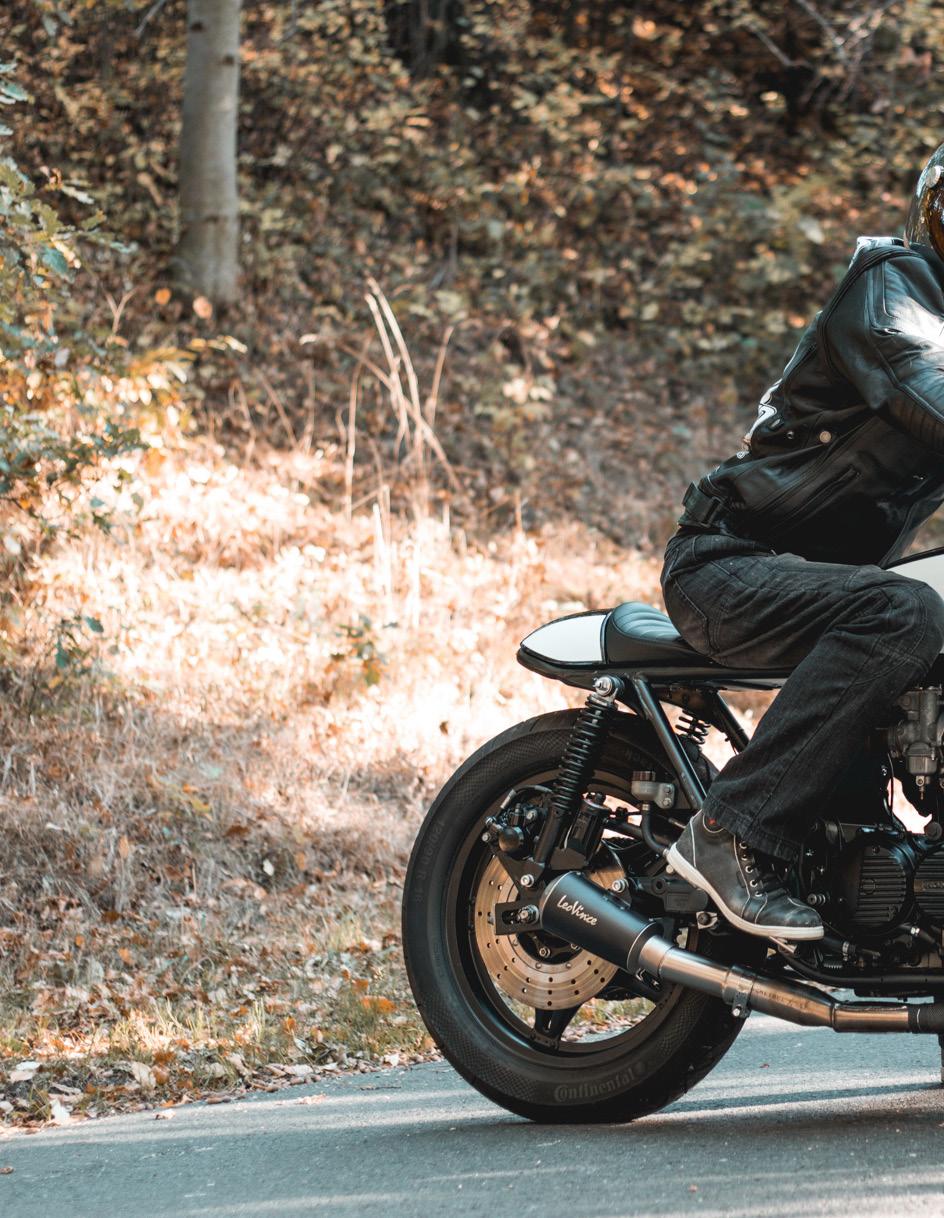
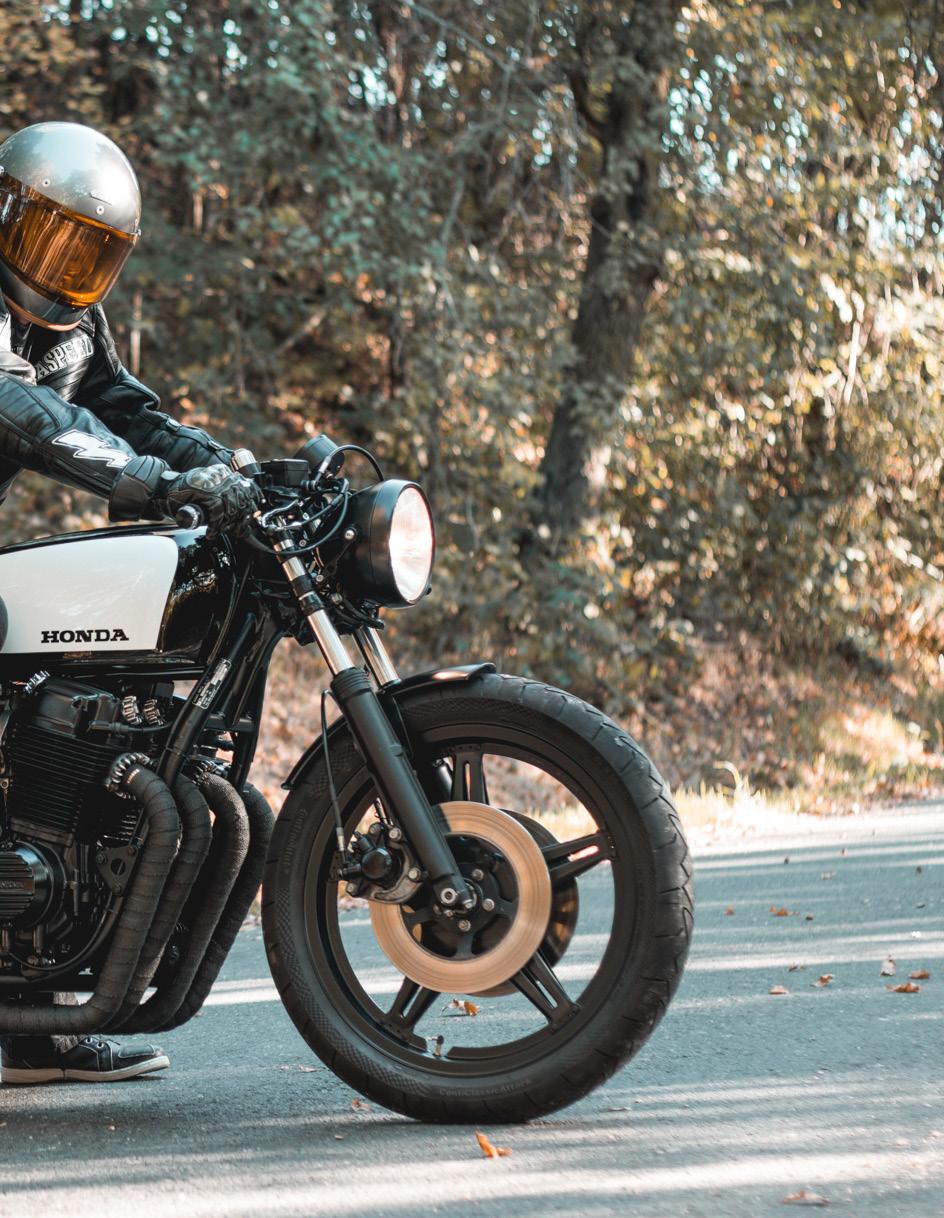
- Tell us the latest about you/your shop.
We were pretty busy over the summer with our Honda CB SevenFifty limited series where we prepared the prototype of presentation at various events. But we also had two individual projects of which one is this Honda CB 750 from 1976.
- What style of motorbike is it? (cafe? scrambler? other?)
The bike is a Cafe Racer with a pretty old school and blacked out styling.
- What make, model and year of motorbike is it?
Honda CB 750 F Super Sport from 1976 67 HP, Fully road-legal with Swiss MFK
- Where did you find the motorbike?
The bike is for the same Swiss client as the CB500 we did last year. With the CB750 he was aiming to have a bit more power available and also a more comfortable seat position for his height. The previous owner did some amateur changes to the seat and paint, but otherwise it was stock.
- What was your inspiration for the build?
The CB750 is a build with more attitude compared to the classic CB500 with its fine gold detailed finish. Still with clean lines the 750 got a more aggressive livery and a wilder exhaust. The blacked out frame and motor help to create a bold look. Our client had some parts in mind, which he asked us to use, such as a LED-stripe tail light and motogadget electronics. He also had some styling clues, which he showed us – we finished it and put it into reality.
- What was the hardest part of the build?
Well, maybe not the hardest parts, but there were two really odd things on this build. We only recognized these issues in the final assembly. First we noticed that all cables for indicators were non- existent anymore, so we had to rewire these. And furthermore the gear shift spindle arm was not hooked into the shift drum, so the bike could not be put in any gear. We had to open the transmission cover to figure this out and to correct the error. We don’t know if this happened by chance or if the previous owner made a mistake while assembling. Either way it’s always time consuming stuff, so solve such issues.
- Can you run us through the build process?
First we managed to shorten the frame while complying with the strict rules in Switzerland. This way we could create a tidy, very small cowl out of fiber glass. We finished the frame with a classic loop and integrated tail light. The tail light sits in a sheet metal construction which is welded into the loop. The Li-ion battery and all electronics were hidden under the seat and cowl. Before disassembly we cleaned out the frame triangle and de-tapped frame and did a full pre-assembly. The frame, rims and engine as well as some other parts were powder coated respectively painted in matte black. We did the black and white paint job on the fuel tank and seat cowl in-house, as I have the professional background. When assembly started the bike began to come together. We fitted a new oil tank from Cognito Moto and also used their beautiful and clear top triple clamp CNC machined from black anodized billet aluminum. Further we added Fehling clip-ons and the Motogadget chronoclassic tachometer in the cockpit. RFID ignition and m.blaze indicators finish the motogadget configuration of the CB750. For sound and performance we fitted the great looking LeoVince LV-10 Black Edition stainless steel muffler and tuned the carbs to pod filters. The 4-into-1 manifold was wrapped in anthracite heat wrap for a bold look.
- What do you like best about the finished bike? The part we like best about the bike is the minimalist tail which in my opinion looks quite modern with the LED tail light and the clean finish. We also love the bold overall appearance with the black engine, frame and rims. The muffler helps there, too. Black and white is always a classic combination which is never out of date, especially because the monochrome industrial vibe is so popular today.
